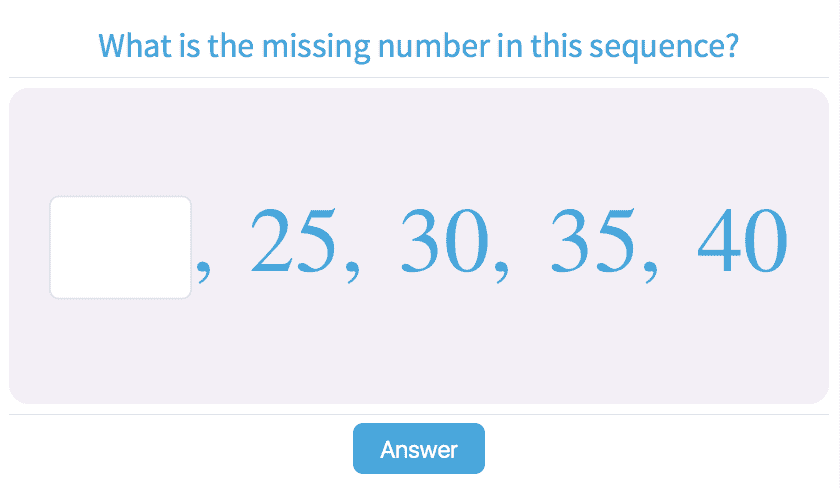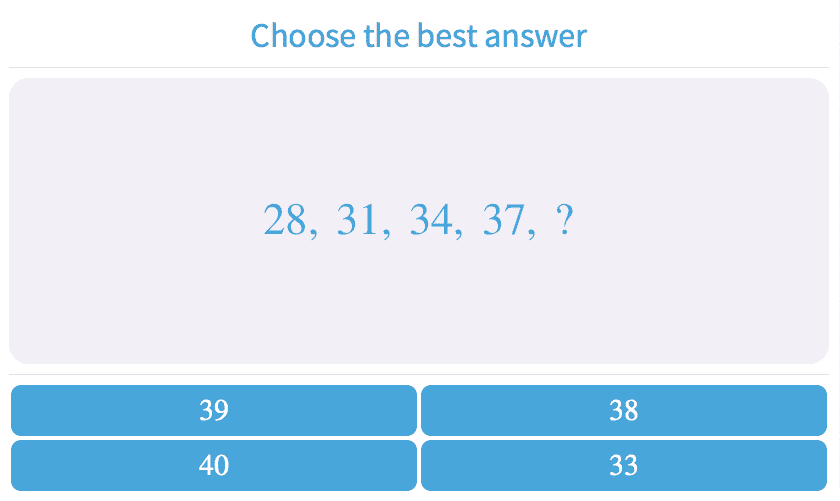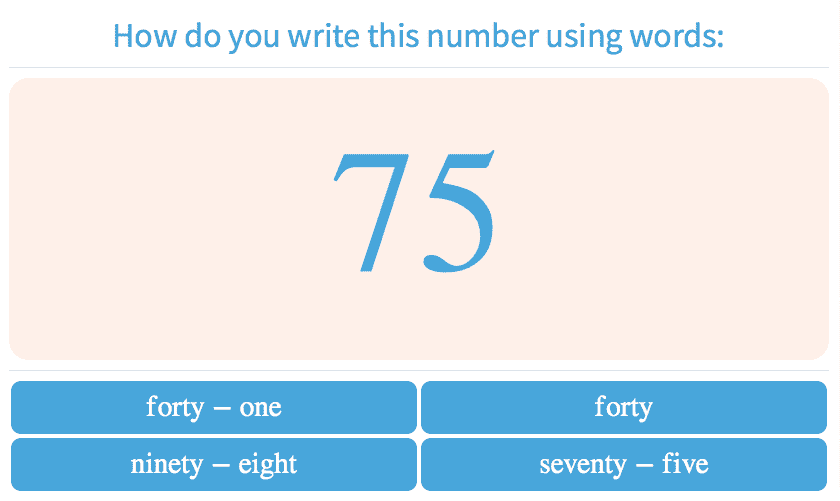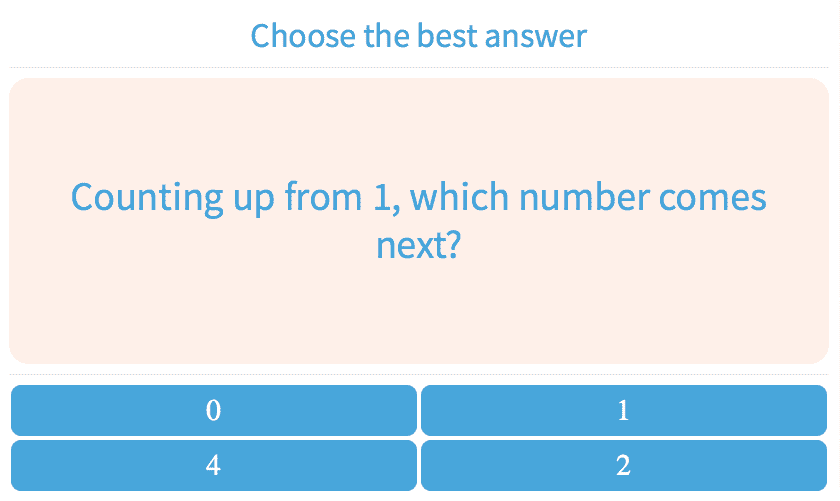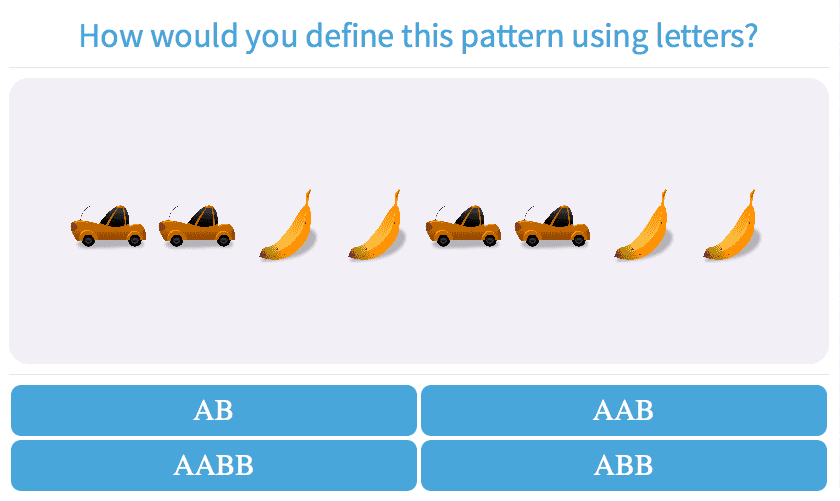-
KS1Key Stage 1 Worksheets
- Counting
- Number Patterns
-
Comparison
-
KS1.12Solve Inequalities
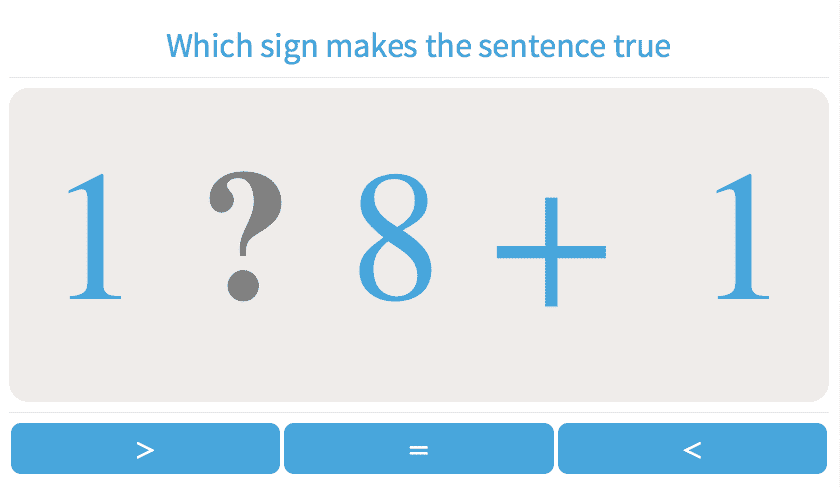
-
KS1.167Long and Short
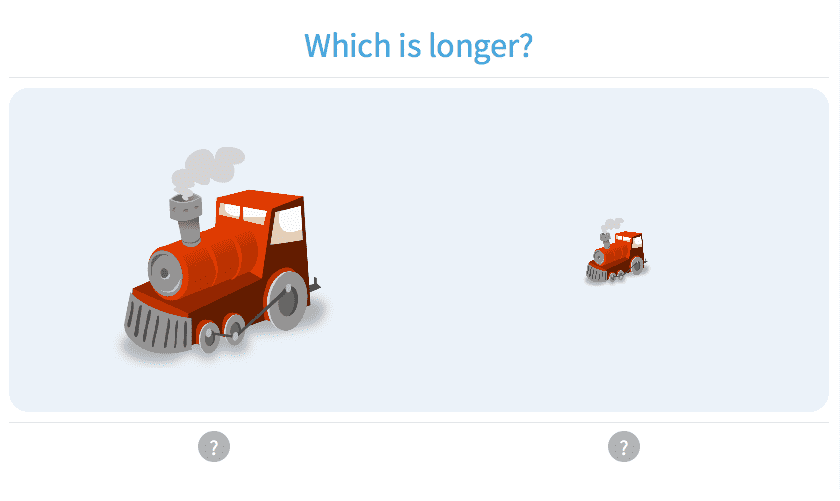
-
KS1.168Tall and Short
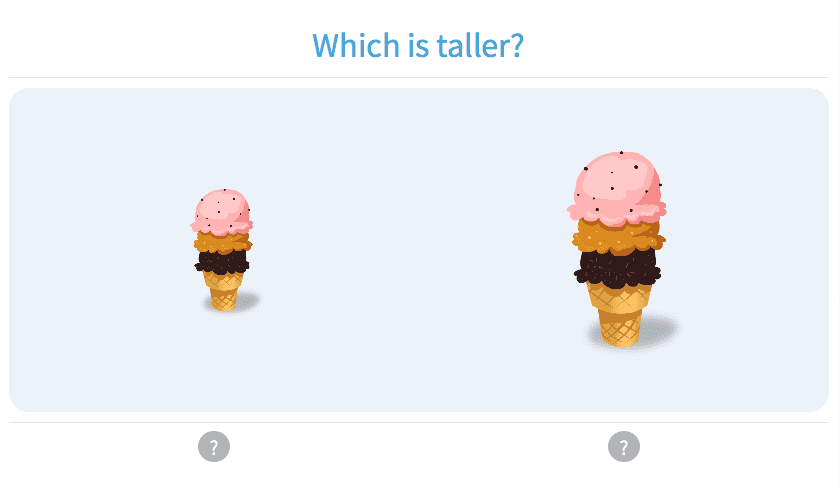
-
KS1.169Light and Heavy
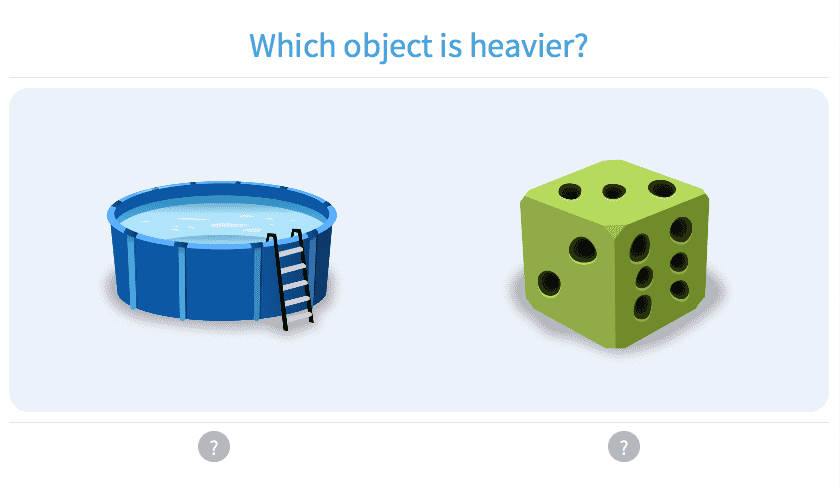
-
KS1.170Holds More or Less
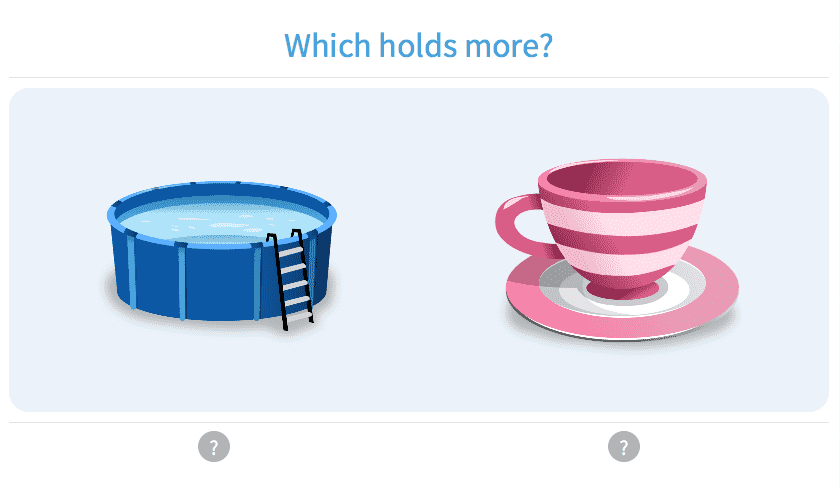
-
KS1.171Compare Size, Weight and Capacity
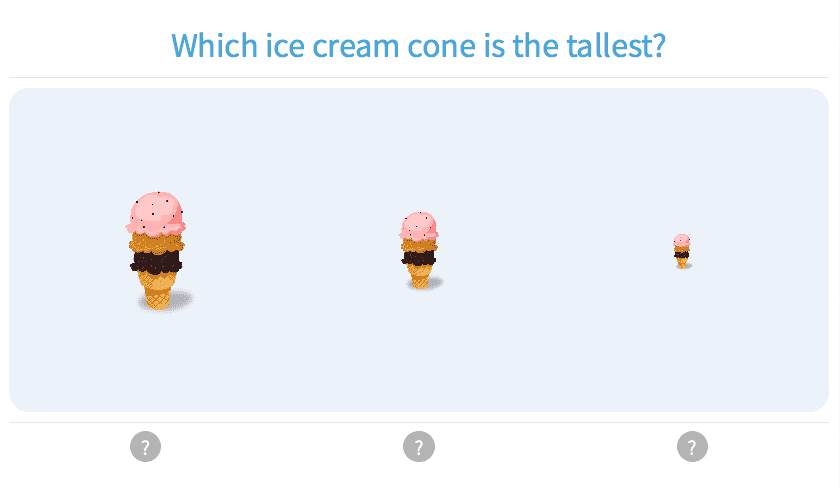
-
KS1.185Identify Same Shapes
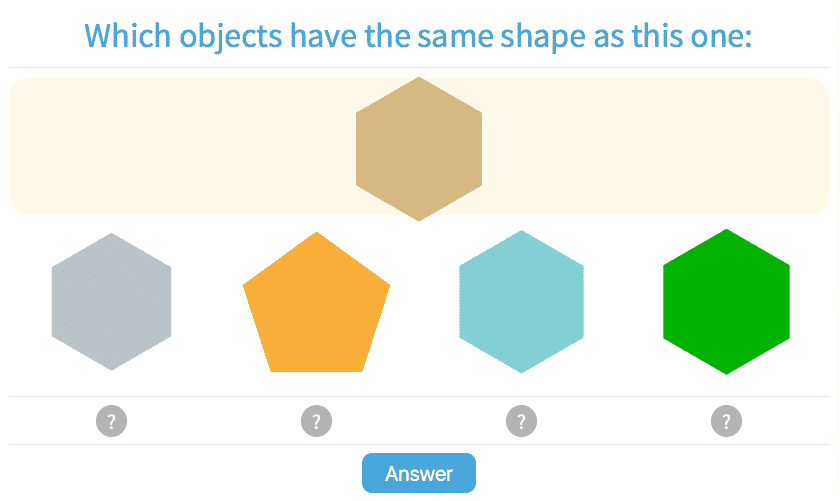
-
KS1.186Comparing Objects - Same / Different
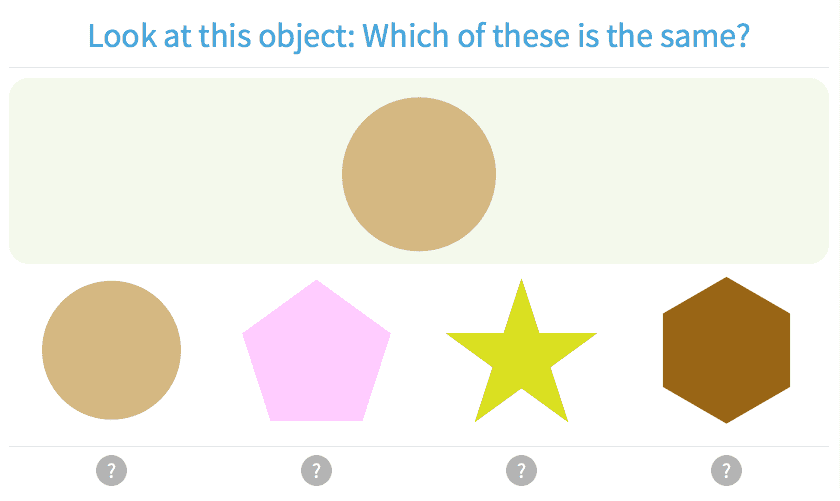
-
KS1.213Venn Diagrams
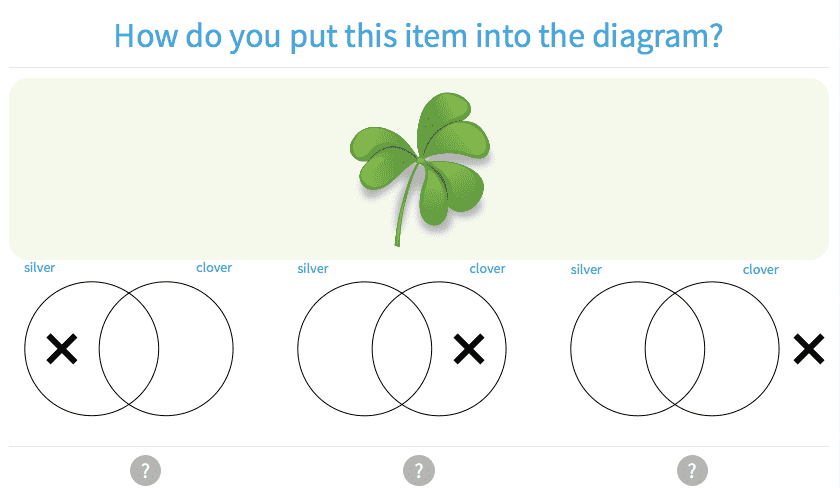
-
-
Number Properties
-
KS1.12Solve Inequalities

-
KS1.15Value of Underlined Digit Up to 99
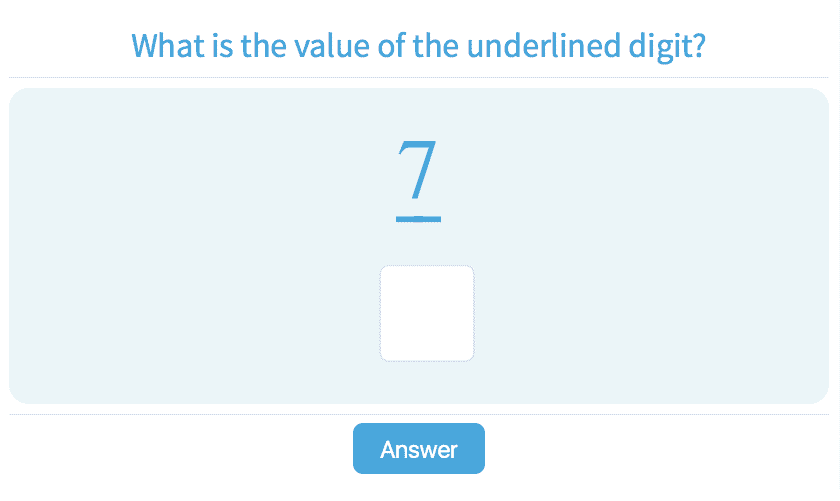
-
KS1.16Value of Underlined Digit Up to 1000
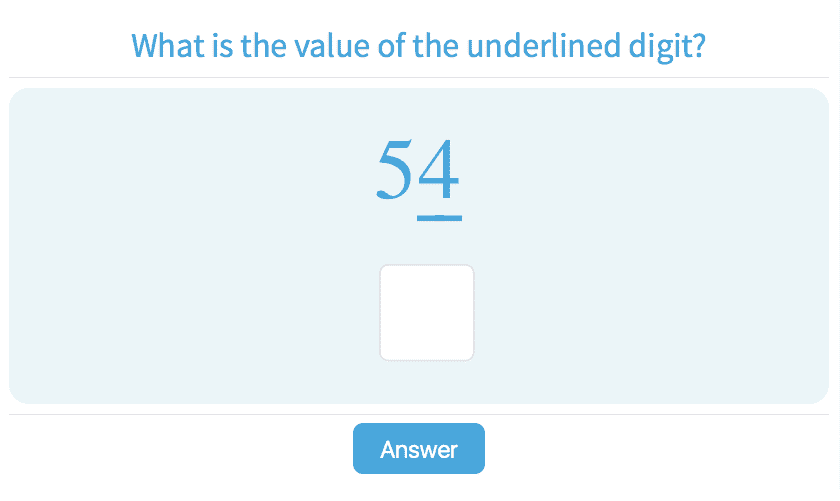
-
KS1.17Identify the Digit with a Particular Place Value
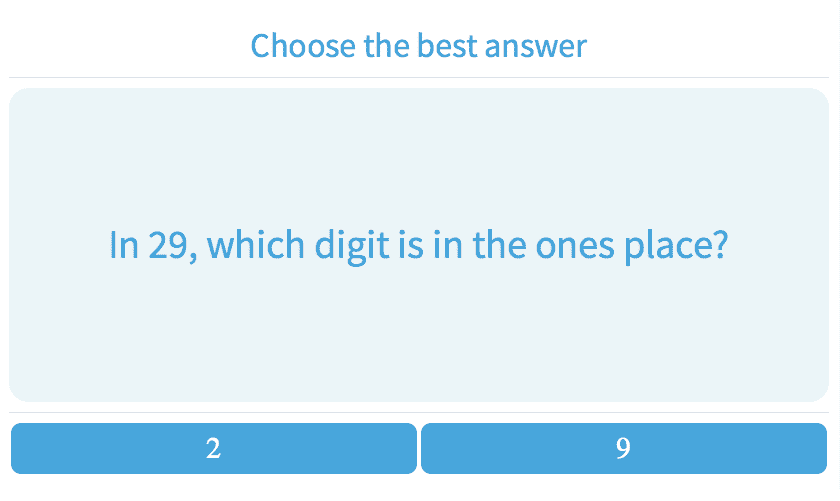
-
KS1.18Convert Numbers to Tens and Ones Up to 1000
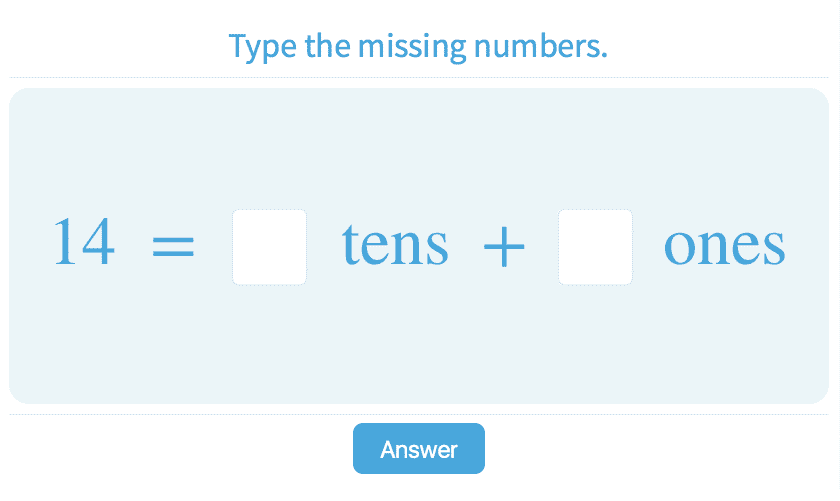
-
KS1.20Regrouping Tens and Ones I
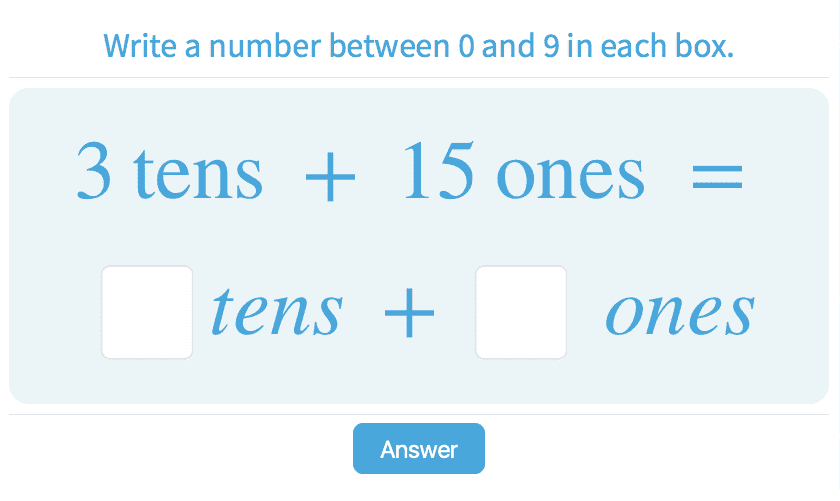
-
KS1.21Regrouping Tens and Ones II
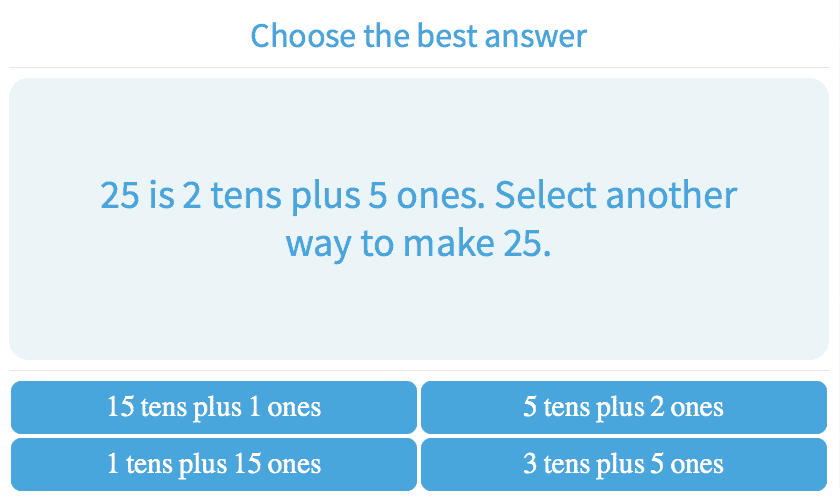
-
KS1.24Simplify Expanded Form
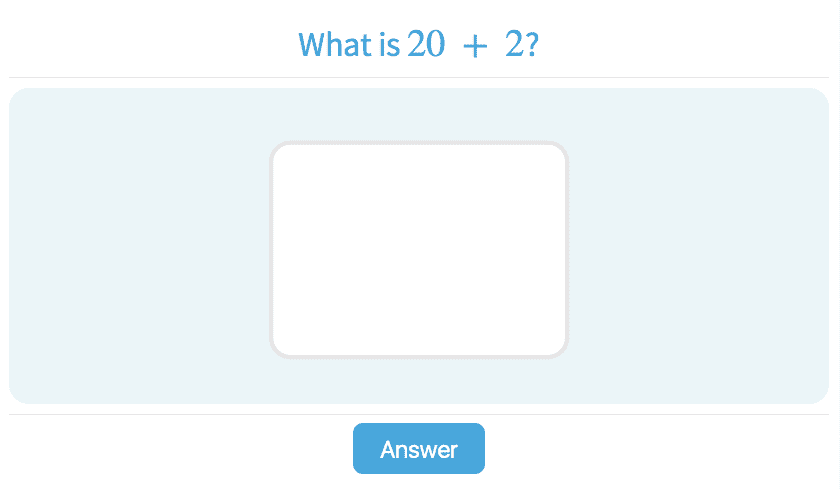
-
KS1.25Convert from Expanded Form
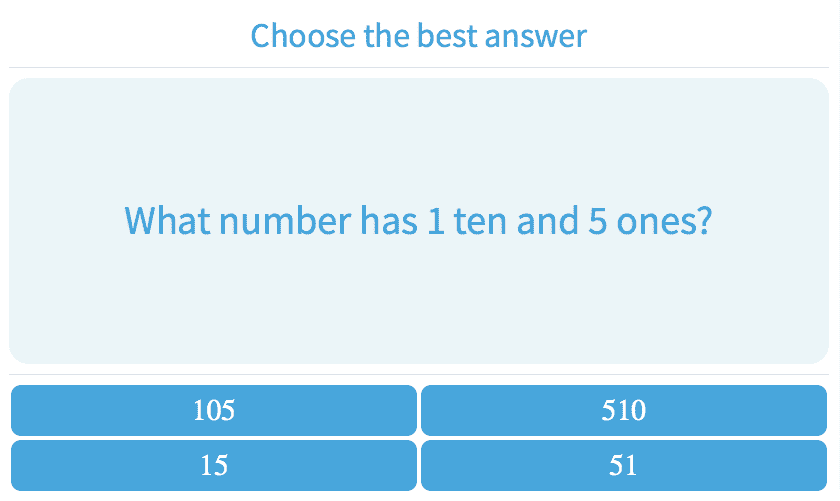
-
KS1.28Value of Underlined Digit with Numbers Up to 1000
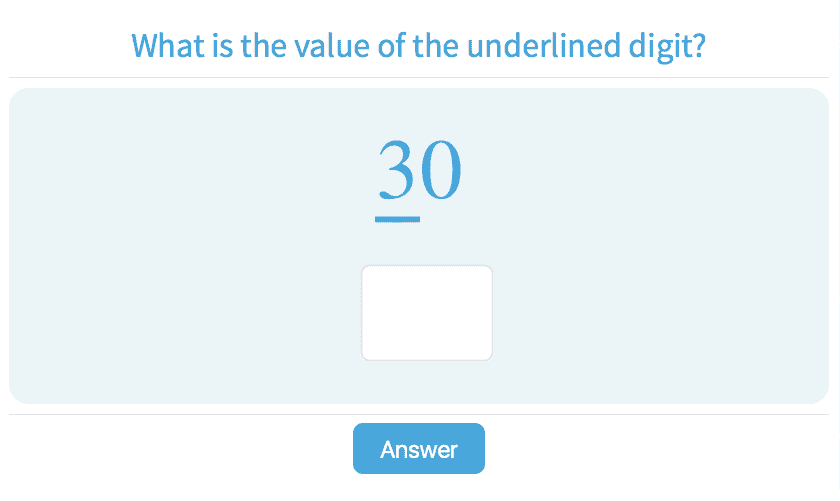
-
KS1.29Convert Numbers with Tens, Hundreds, Thousands
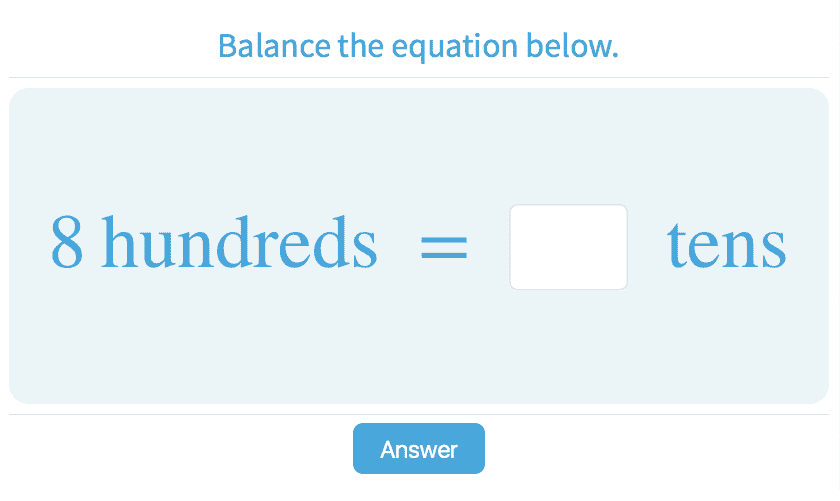
-
KS1.40Choose the Equivalent Fraction
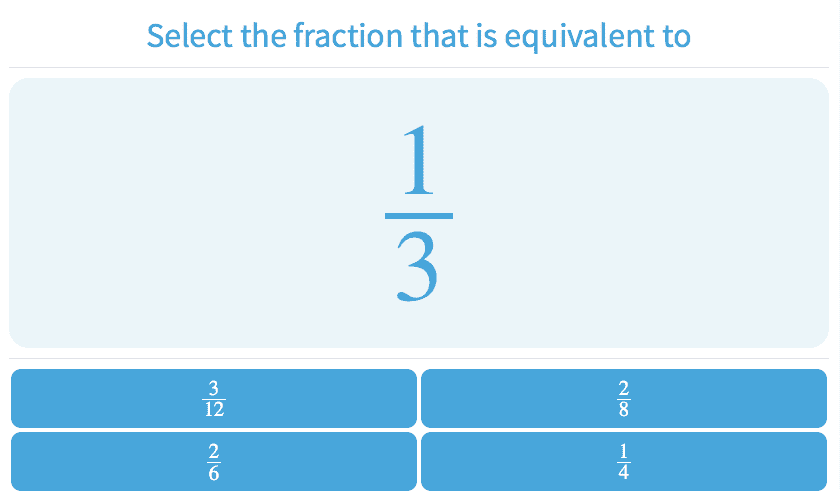
-
KS1.84Related Equations with Sums Up to 1000
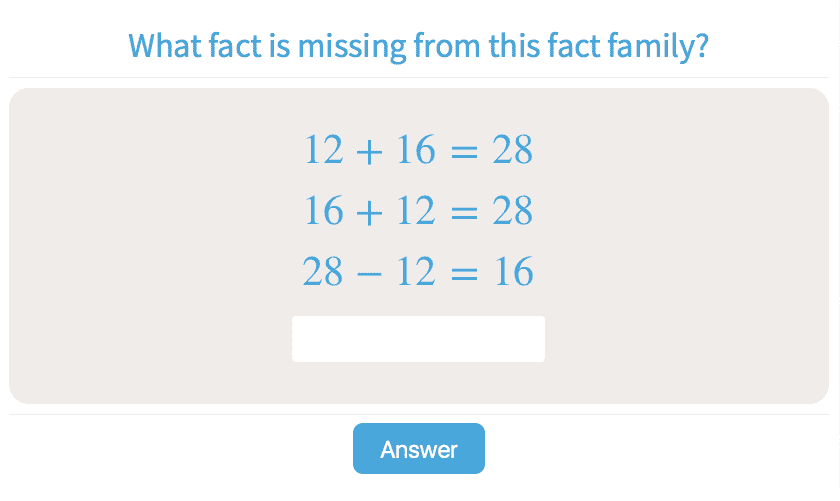
-
KS1.85Related Equations Up to 10
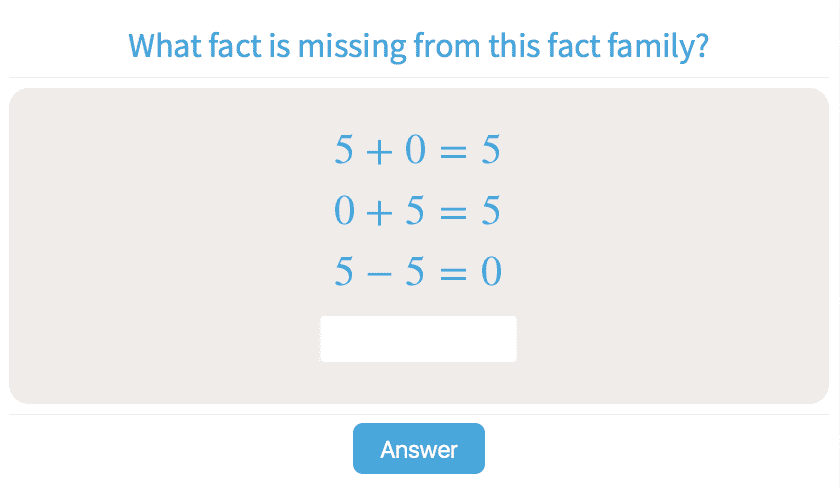
-
KS1.89Properties of Addition
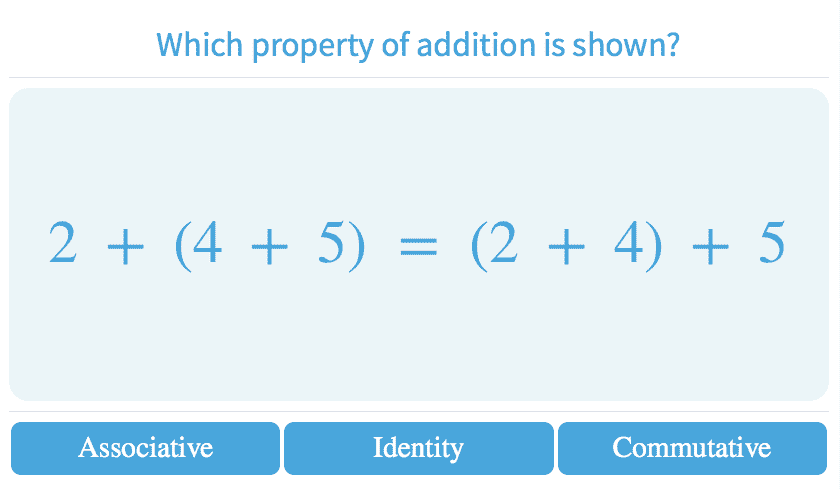
-
KS1.93Related Addition Equations Up to 10
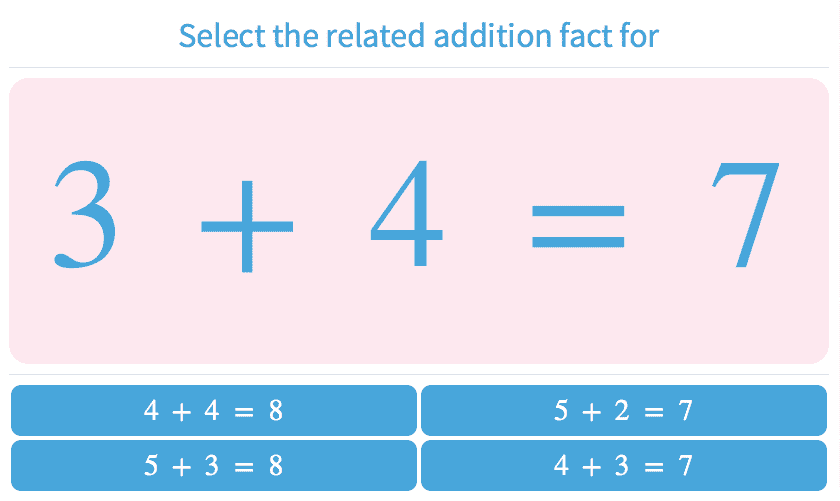
-
KS1.96How to Make a Number - Values Up to 100
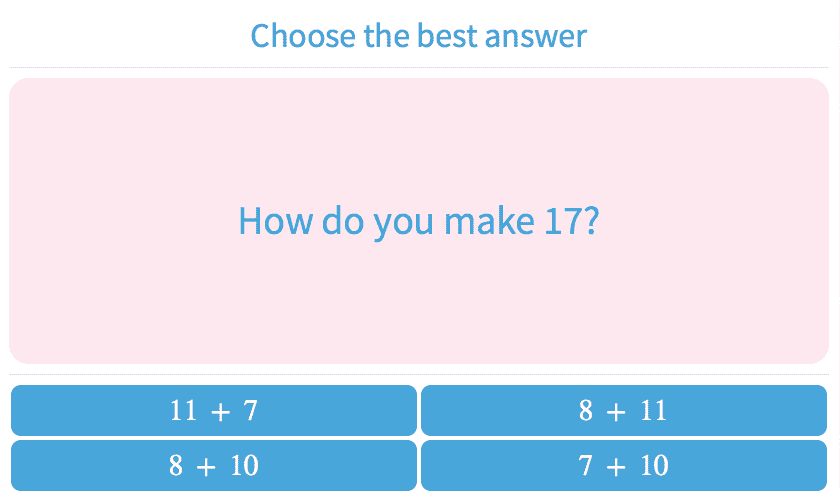
-
KS1.106Related Subtraction Equations Up to 10
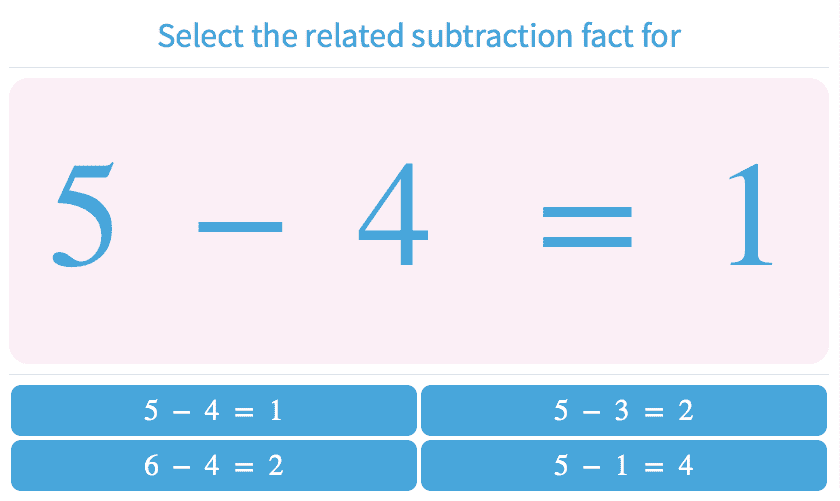
-
KS1.121Ways to Make a Number with Values Up to 100
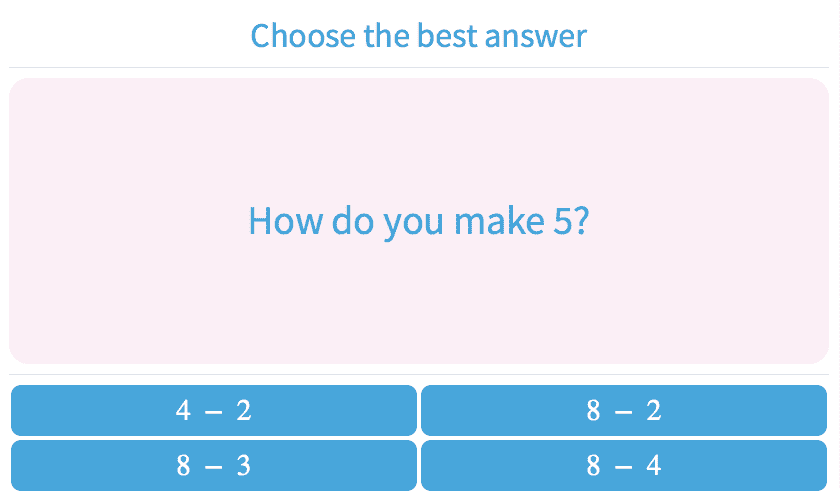
-
KS1.135Relate Addition and Multiplication
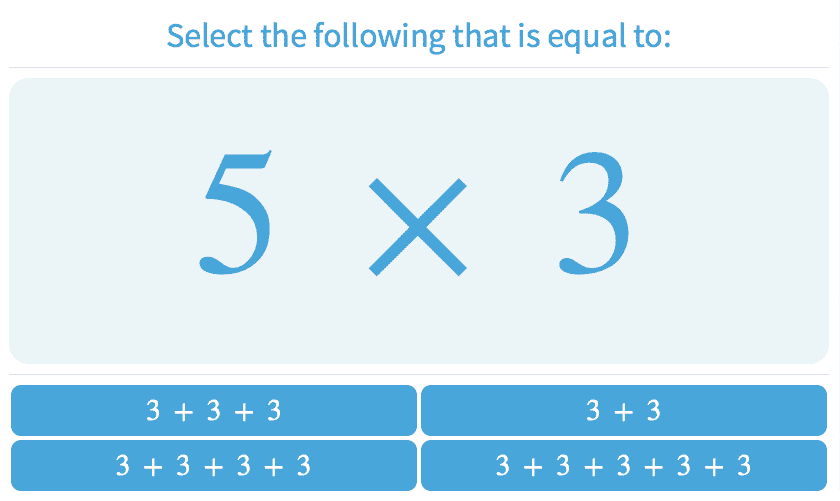
-
KS1.137Distributive Property
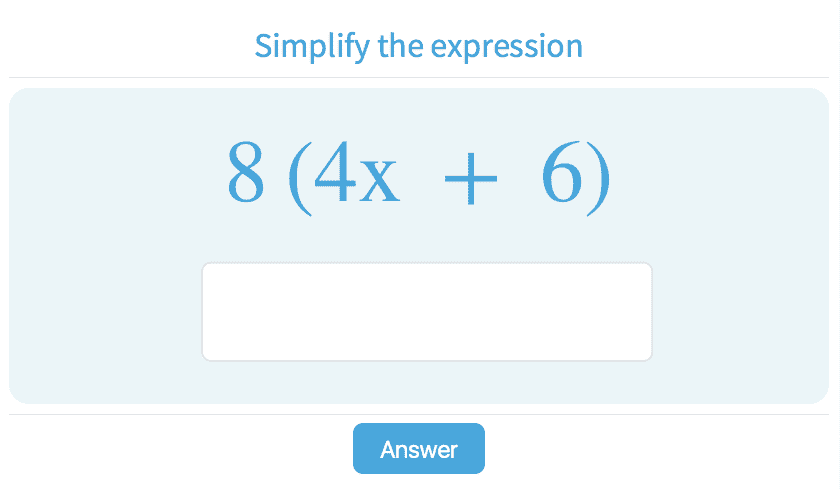
-
KS1.138Simplify Variable Expressions
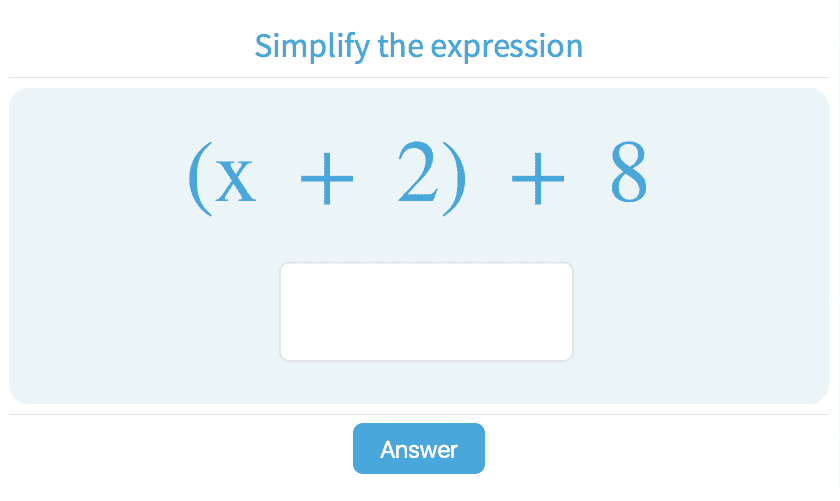
-
KS1.146Related Addition Equations Up to 1000
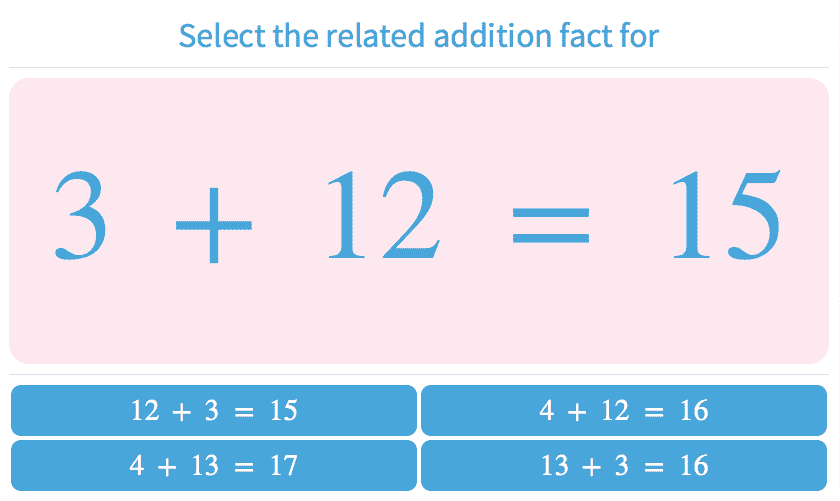
-
KS1.147Related Subtraction Equations with Sums Up to 1000
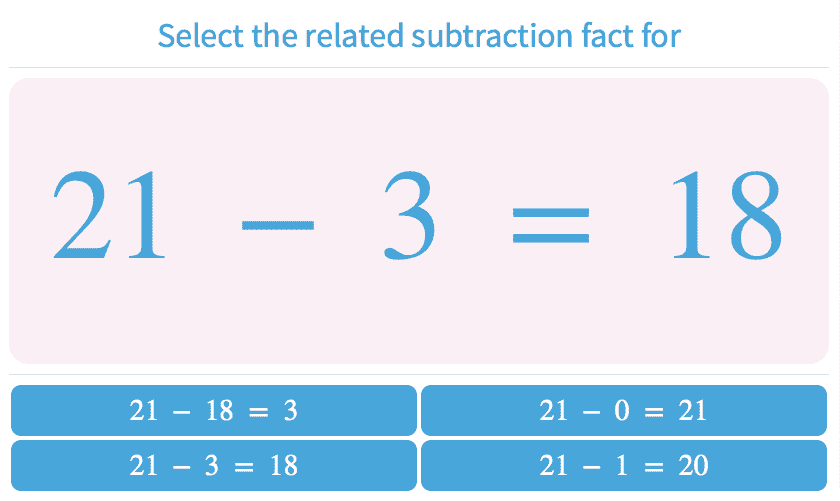
-
-
Mixed Equations
-
KS1.12Solve Inequalities

-
KS1.84Related Equations with Sums Up to 1000

-
KS1.85Related Equations Up to 10

-
KS1.86Addition and Subtraction - Balance Equations Up to 100
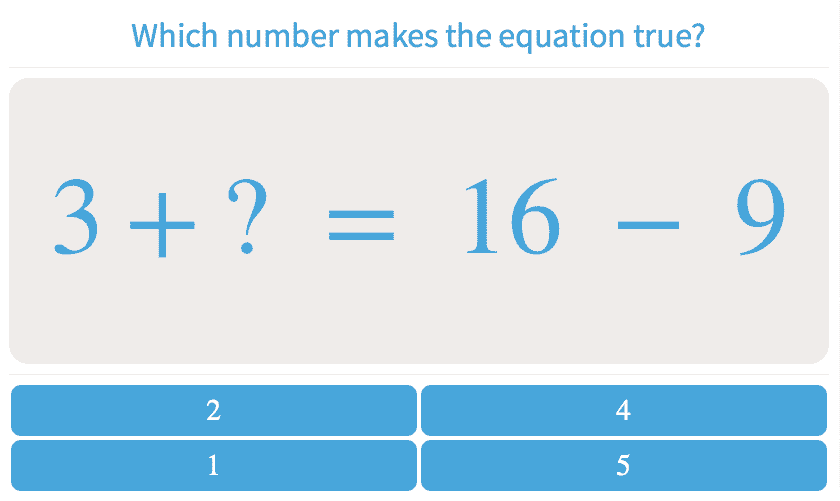
-
KS1.87Addition and Subtraction - Balance Equations Up to 18
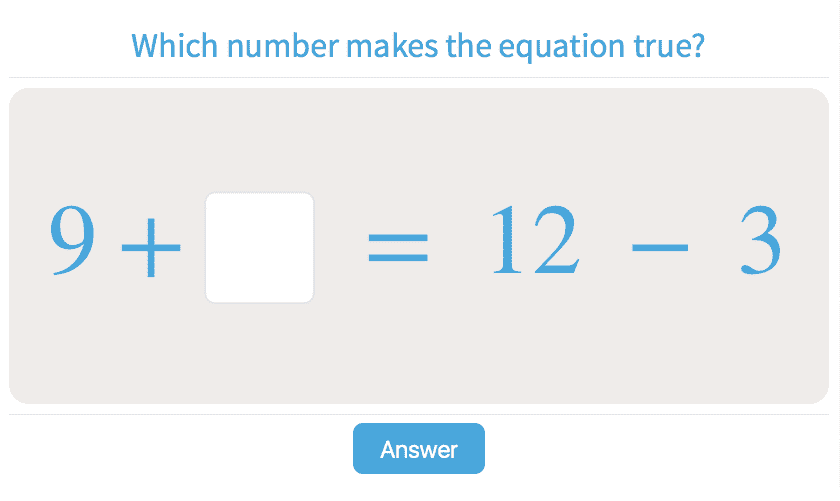
-
KS1.88Addition and Subtraction - Balance Equations Up to 100
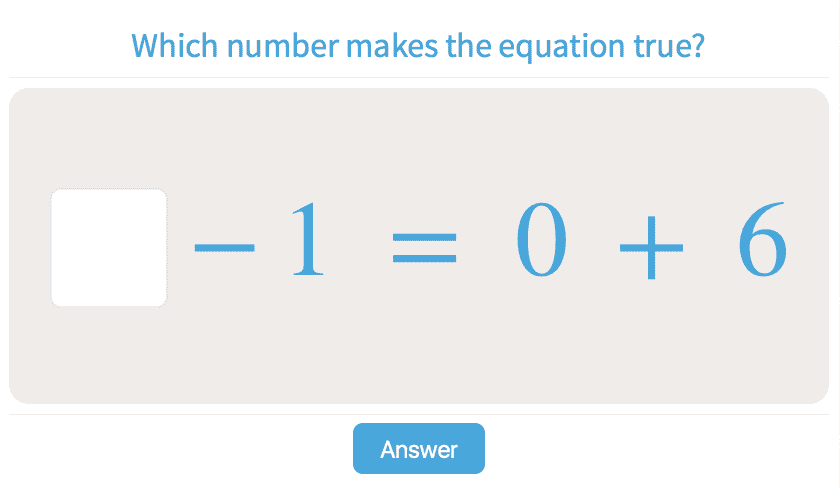
-
KS1.90Solve for the Variable with Addition and Subtraction
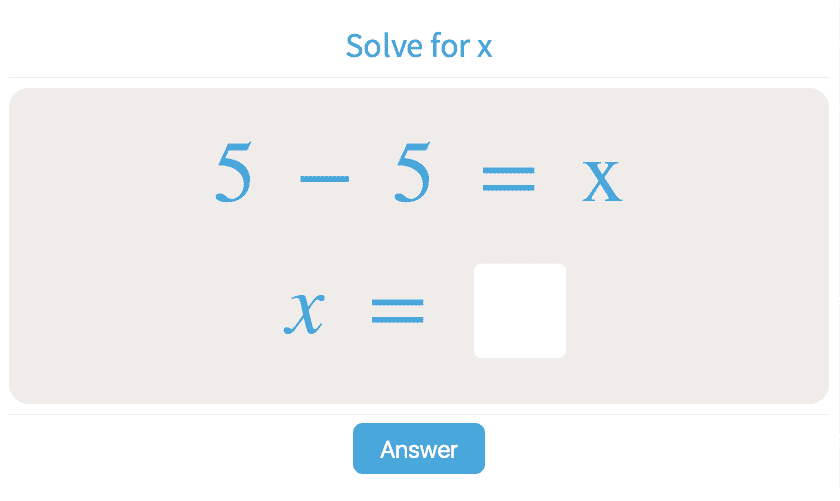
-
KS1.91Solve for the Variable with Multiplication and Division
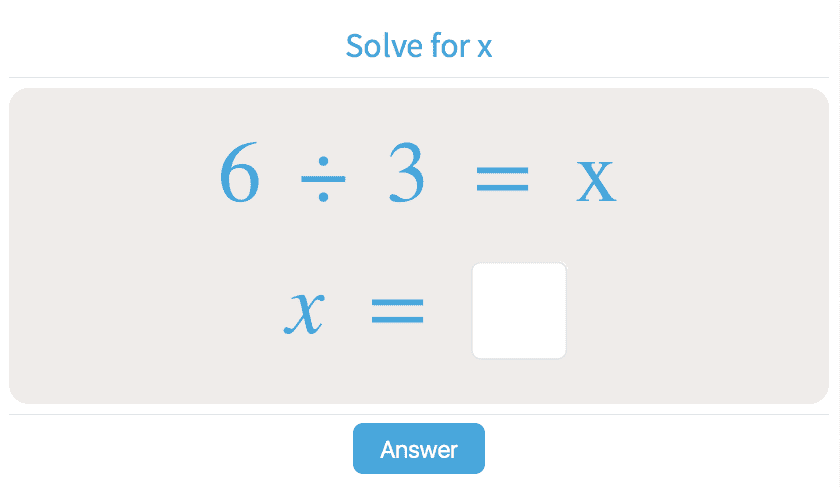
-
KS1.92Write Variable Equations to Represent
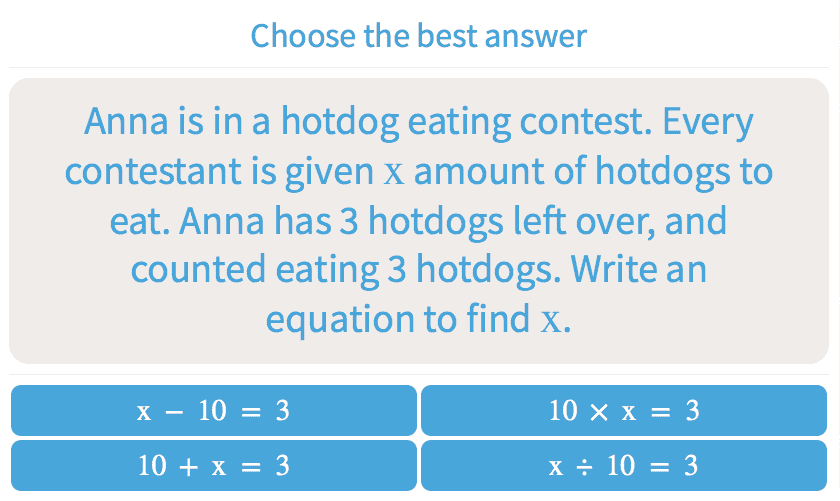
-
KS1.137Distributive Property

-
KS1.138Simplify Variable Expressions

-
-
Addition
-
KS1.18Convert Numbers to Tens and Ones Up to 1000

-
KS1.20Regrouping Tens and Ones I

-
KS1.22Adding Tens and Ones
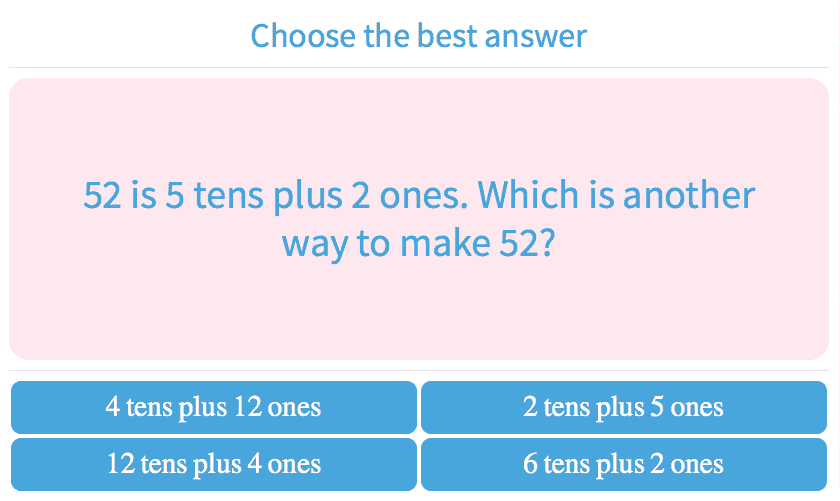
-
KS1.29Convert Numbers with Tens, Hundreds, Thousands

-
KS1.48Add and Subtract Fractions
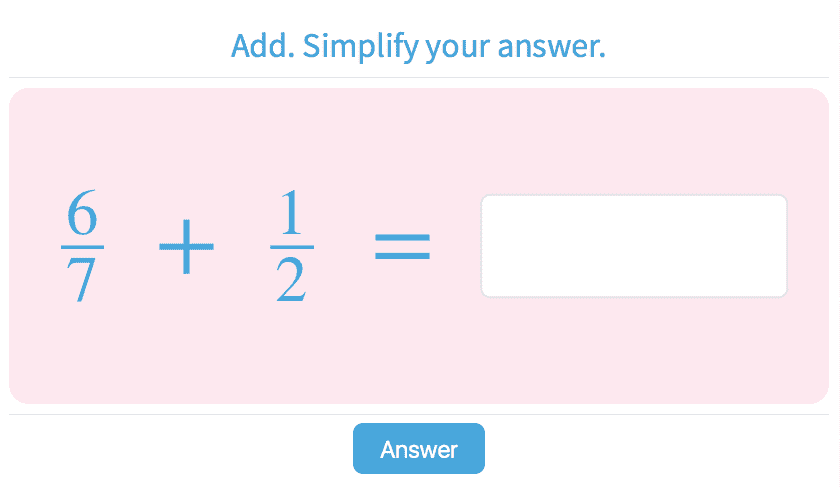
-
KS1.67Complete the Equation with Sums Up to 20
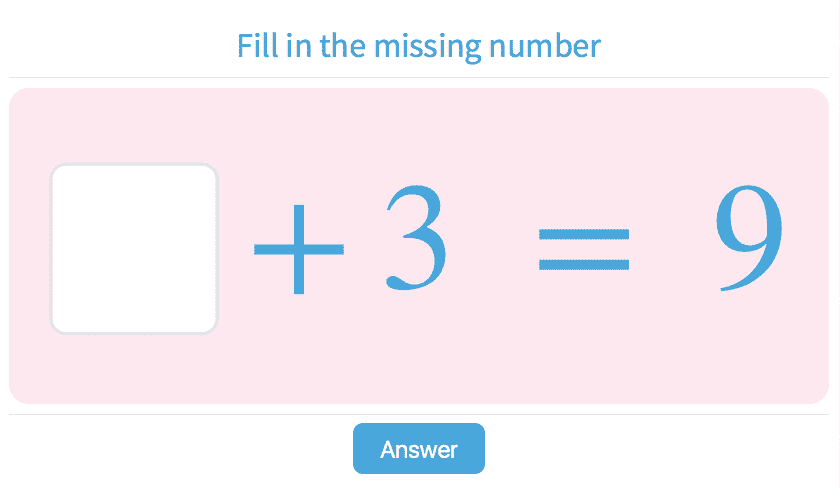
-
KS1.68Balance Addition Equations with Sums Up to 20
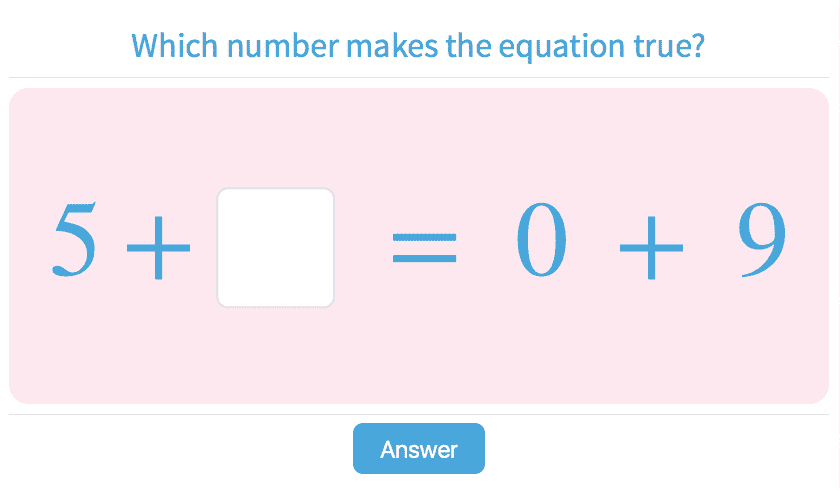
-
KS1.71Complete the Equation with Sums Up to 100
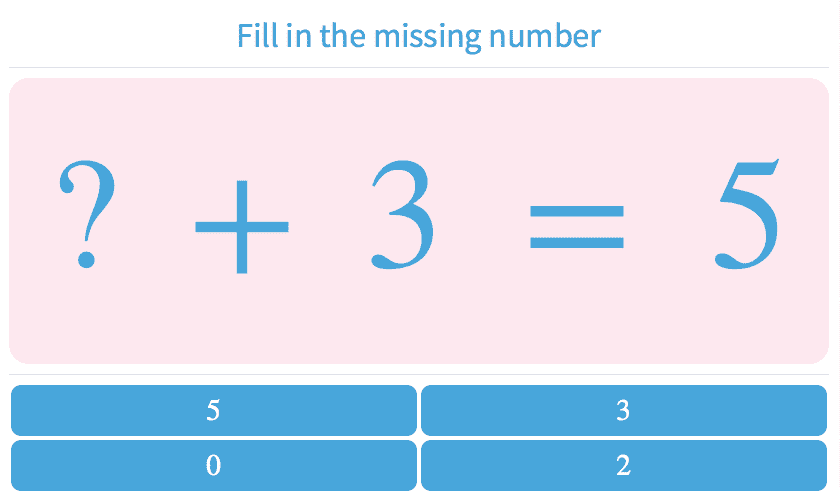
-
KS1.72Balance Addition Equations with Sums Up to 100
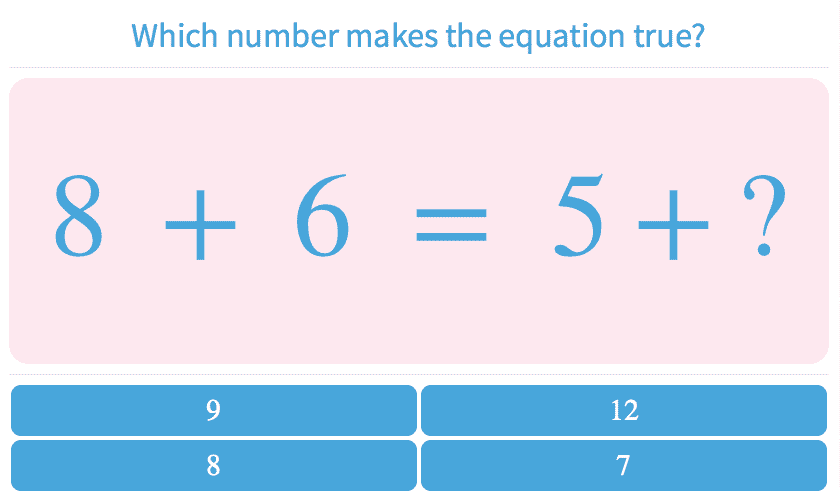
-
KS1.73Balance Addition Equations with Operands Up to 100
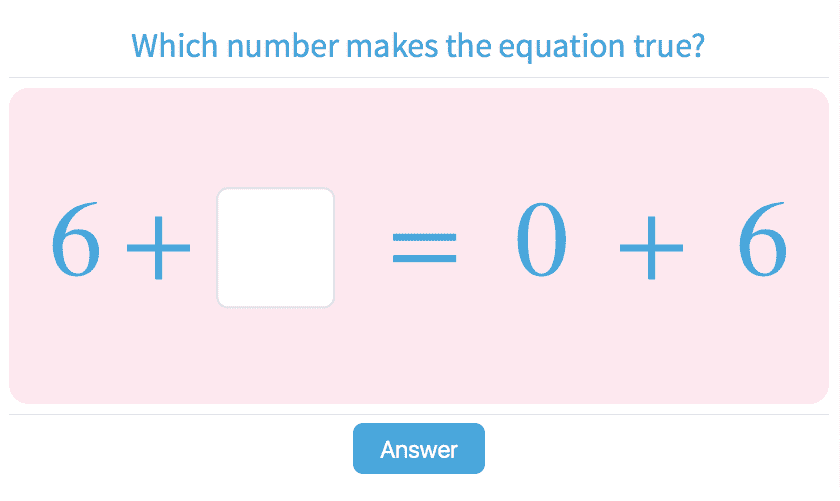
-
KS1.77Complete the Equation with Sums Up to 1000
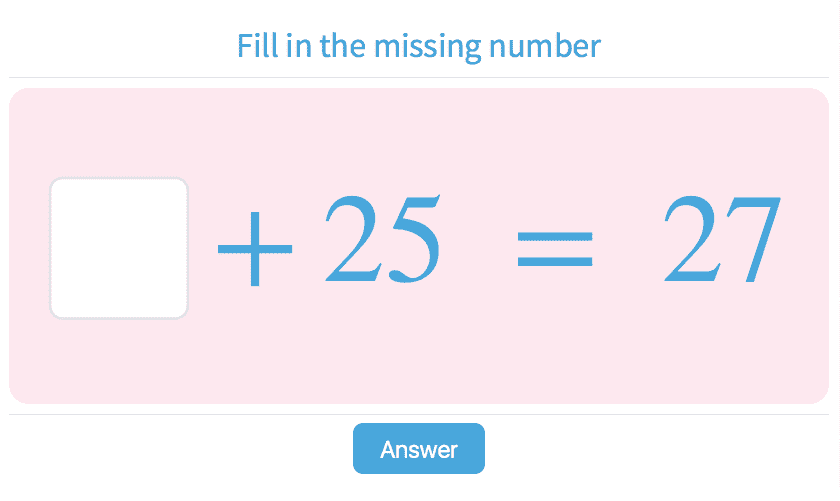
-
KS1.78Complete the Equation with Numbers Up to 1000
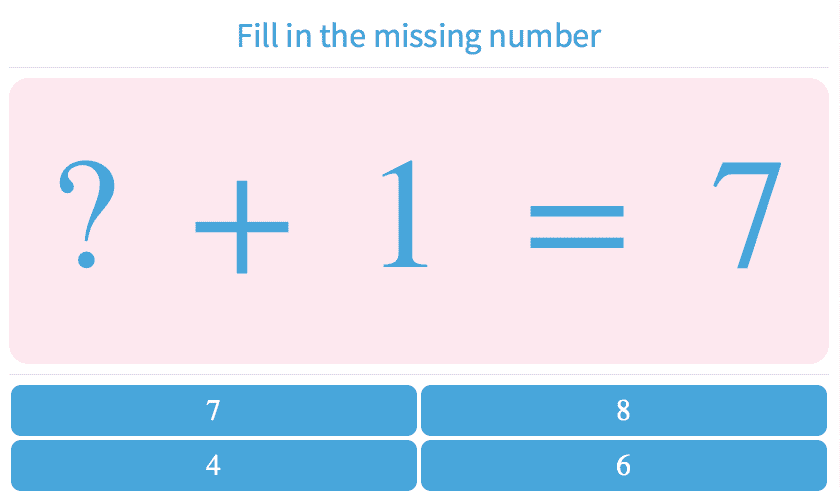
-
KS1.79Balance Addition Equations with Sums Up to 1000
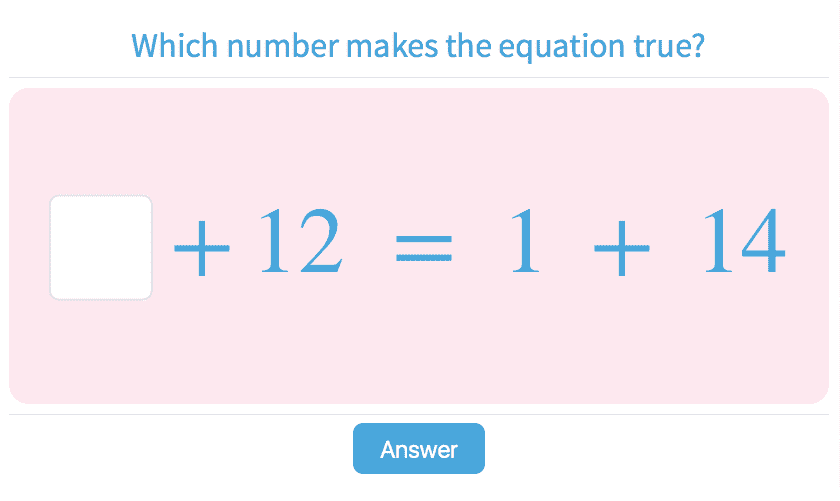
-
KS1.80Balance Addition Equations with Operands Up to 1000
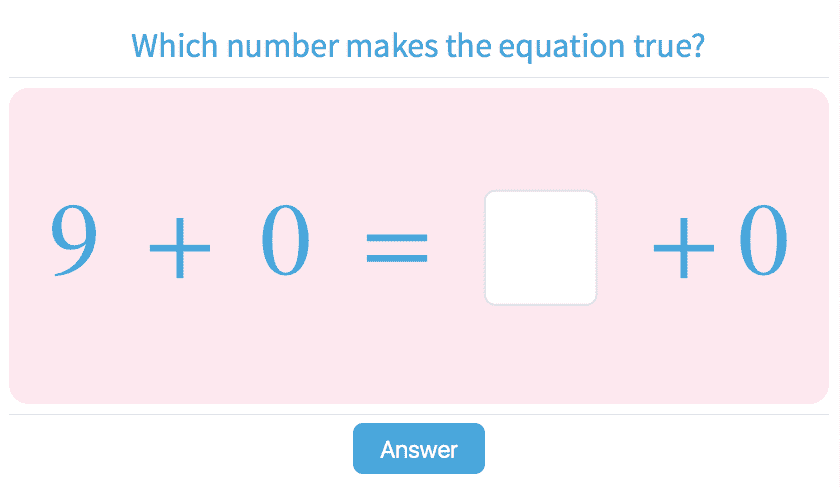
-
KS1.89Properties of Addition

-
KS1.93Related Addition Equations Up to 10

-
KS1.94Choose Addition Pictures Up to 10
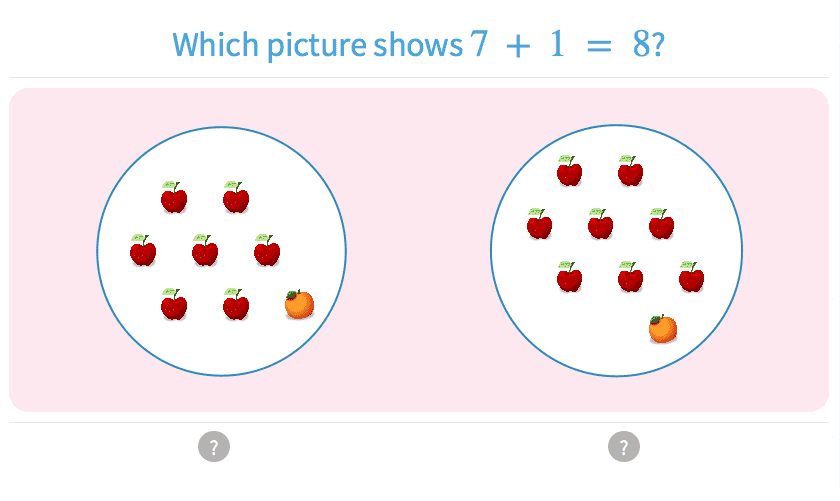
-
KS1.96How to Make a Number - Values Up to 100

-
KS1.98Write Addition Sentences to Describe Pictures
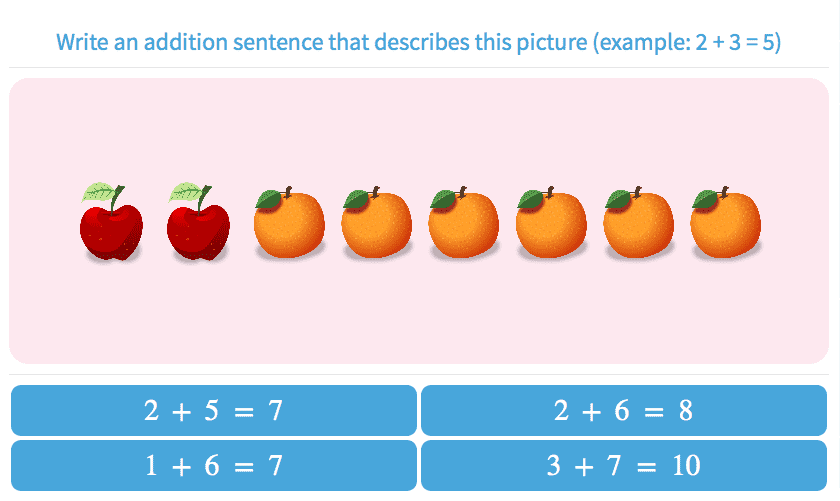
-
KS1.99Addition with Pictures Up to 10
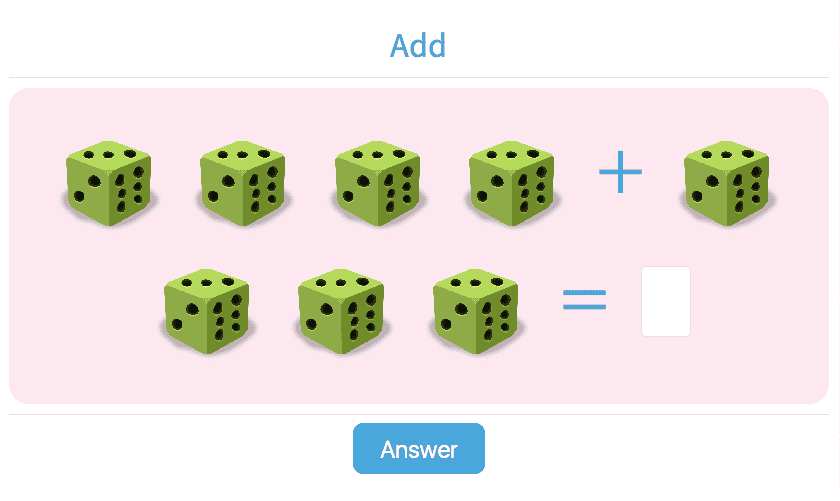
-
KS1.100Choose Addition Pictures Up to 10
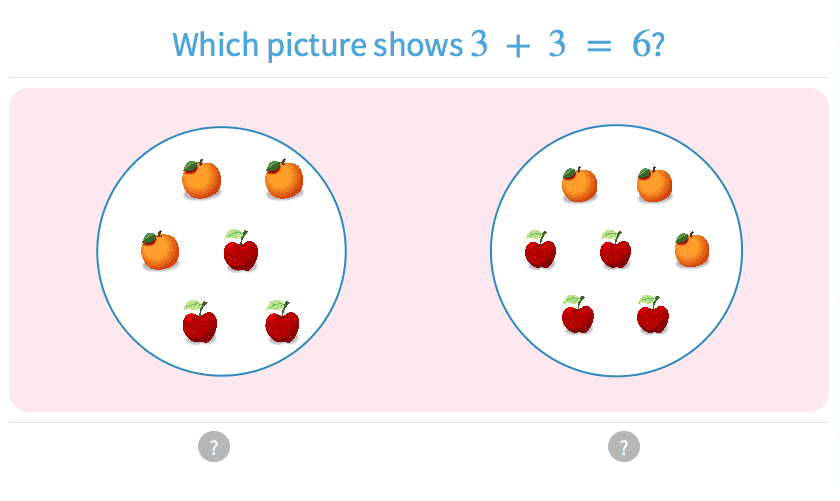
-
KS1.101Addition with Pictures Up to 20
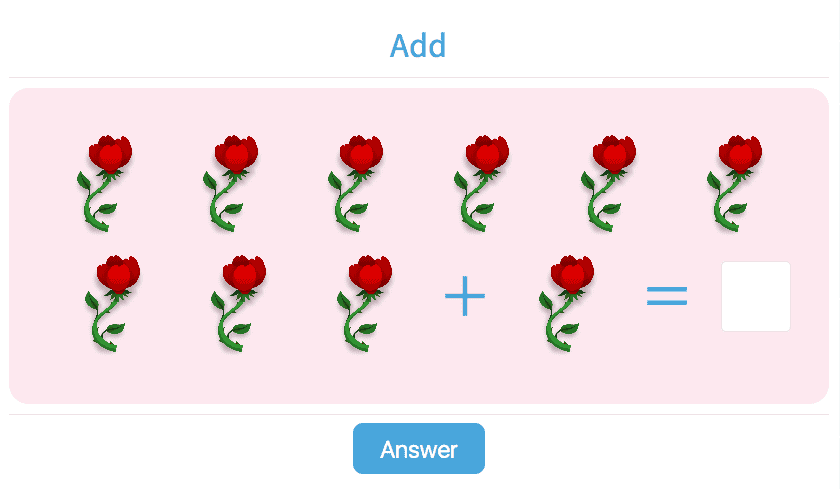
-
KS1.102Addition with Sum Up to 100
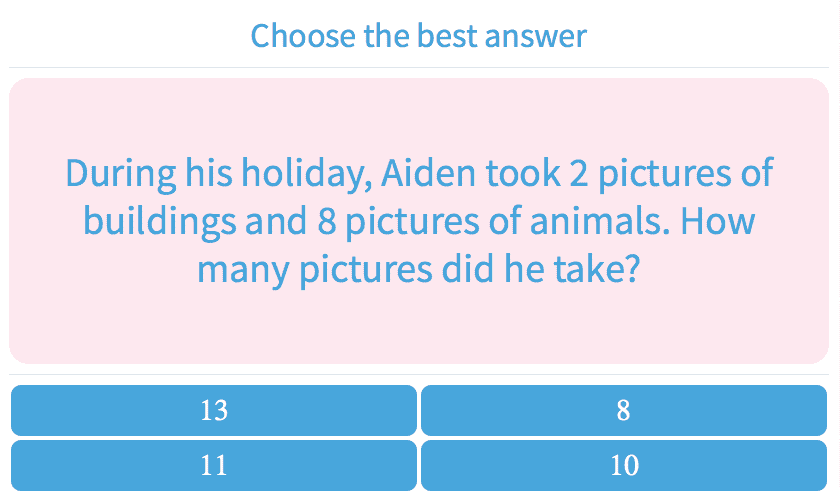
-
KS1.103Addition Sentences Up to 100
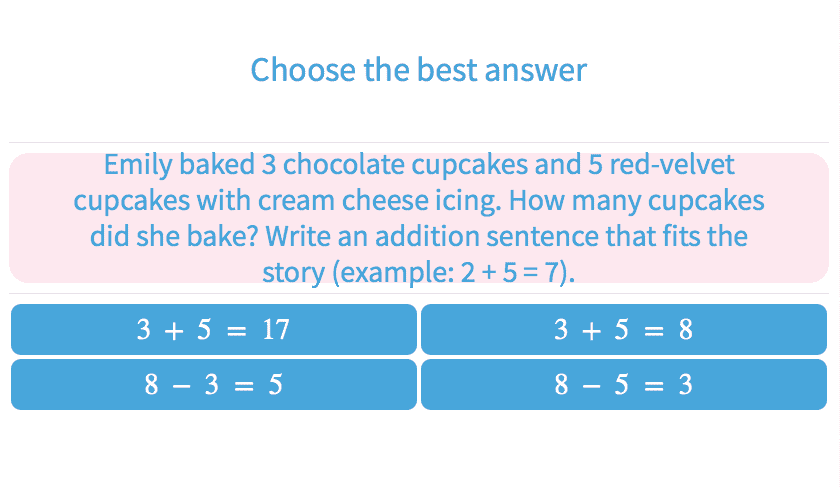
-
KS1.104Adding Three or More Numbers
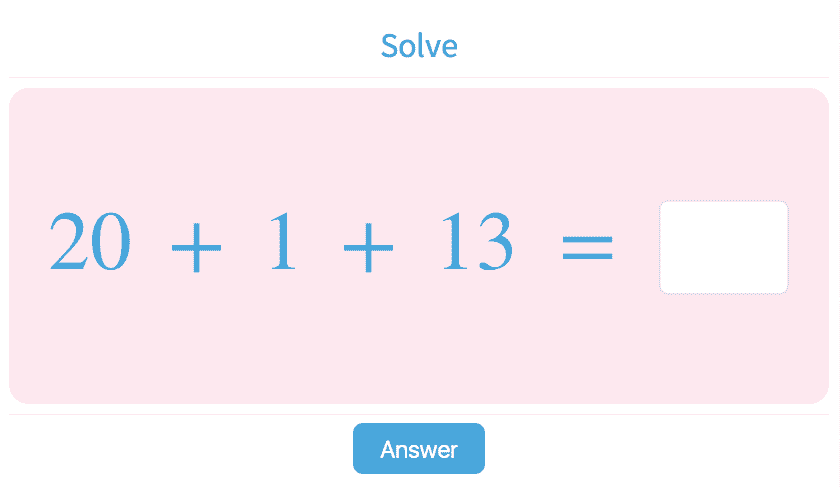
-
KS1.105Adding Three or More Numbers
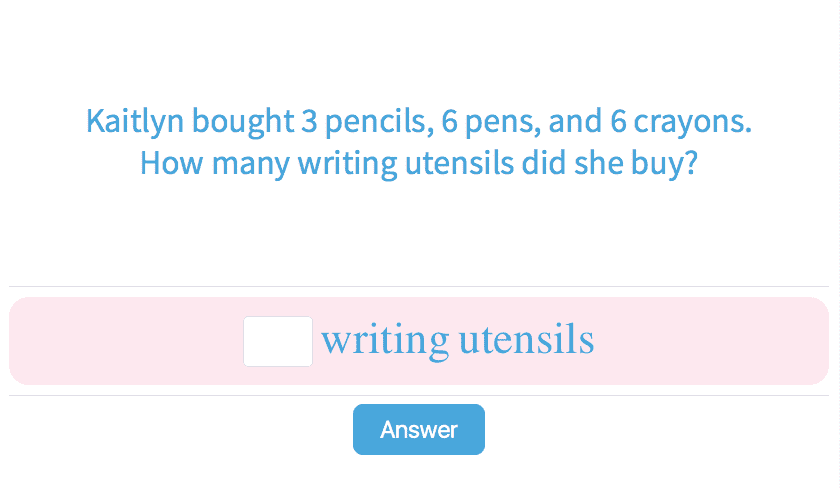
-
KS1.112Add a One Digit Number to a Two Digit Number
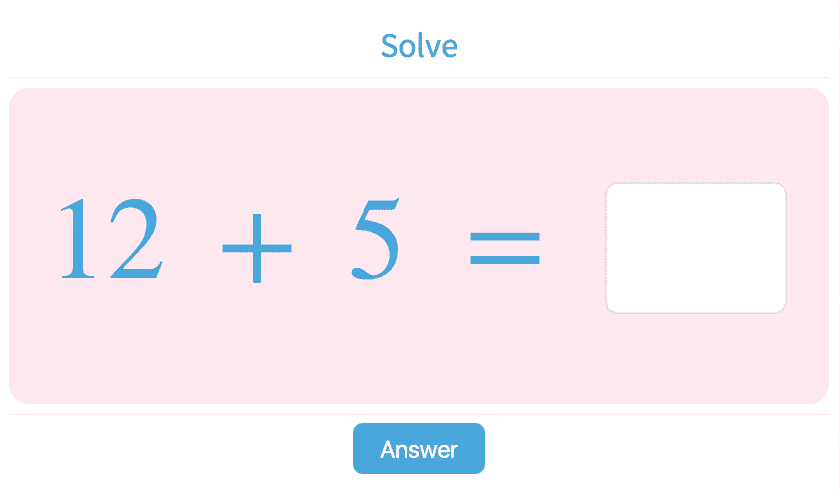
-
KS1.113Add Two Digit Numbers
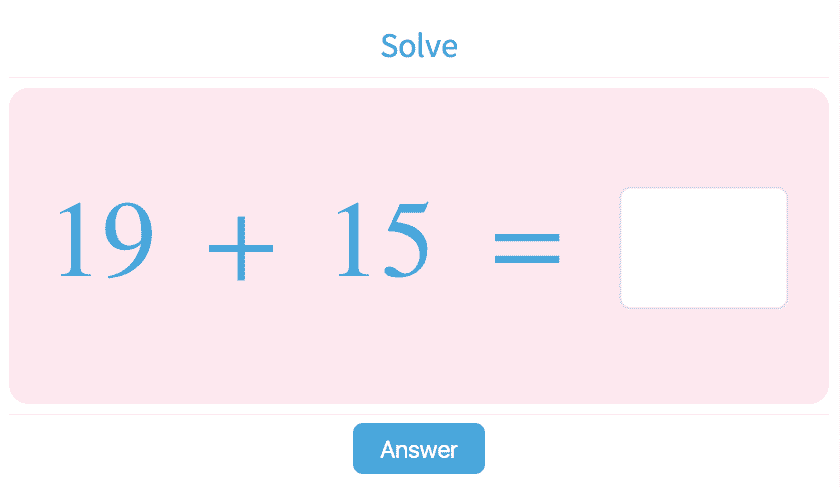
-
KS1.114Add Two Numbers Up to 100
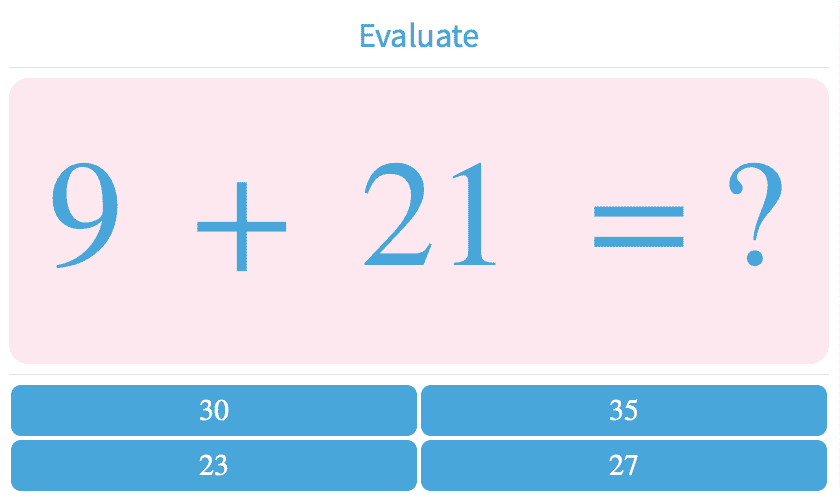
-
KS1.115Add Numbers - Sums Up to 1000
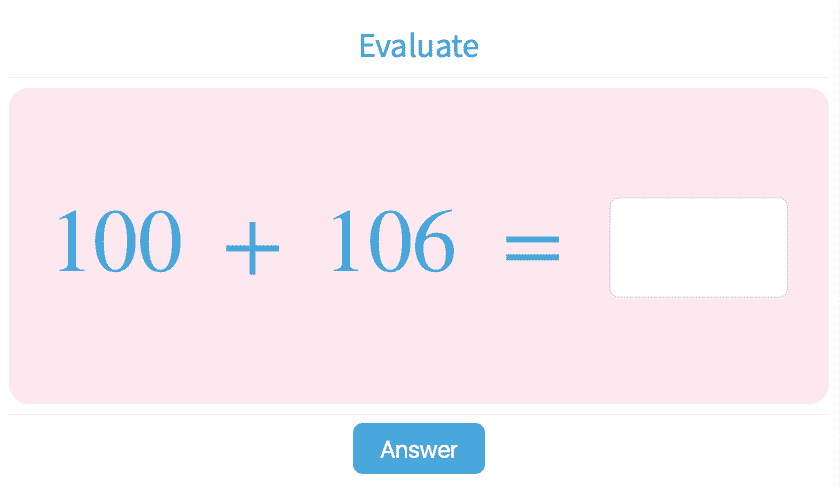
-
KS1.116Adding Three or More Numbers with One or Two Digits
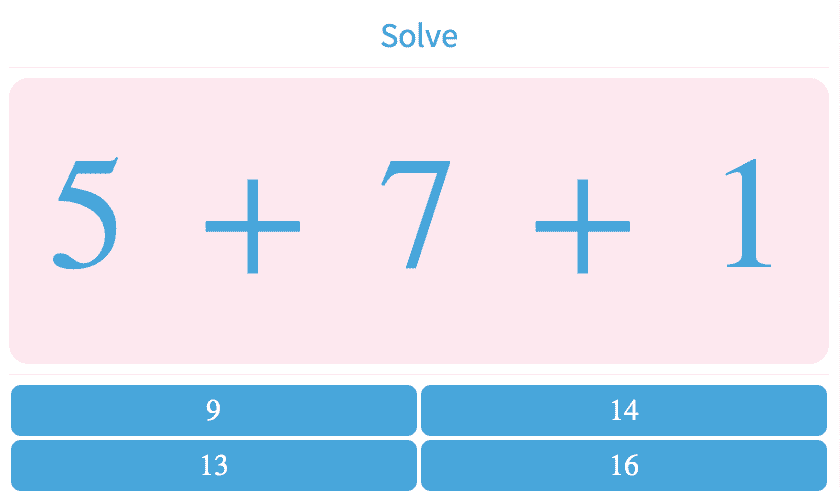
-
KS1.124Add Three Digit Numbers Ending in Zero Up to 1000
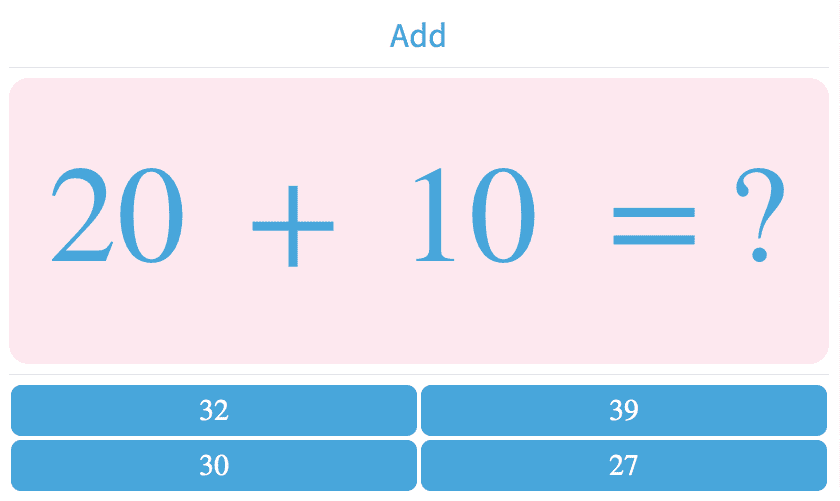
-
KS1.125Add Multiples of 100
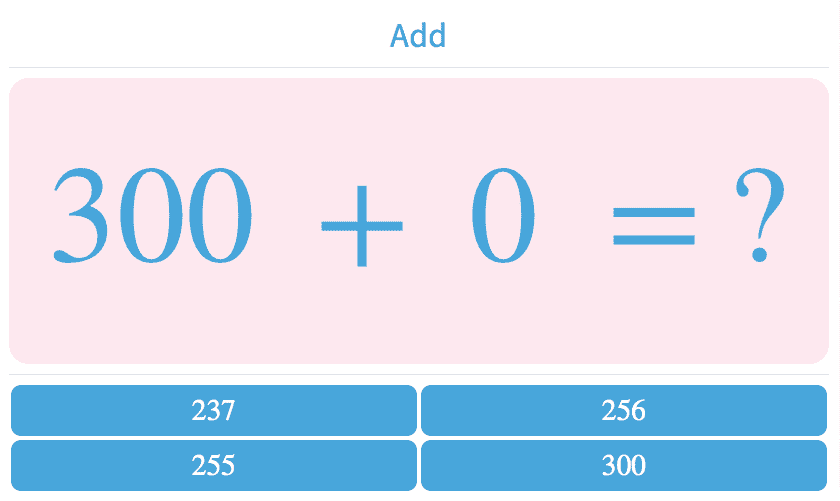
-
KS1.126Addition Sentences Up to 1000
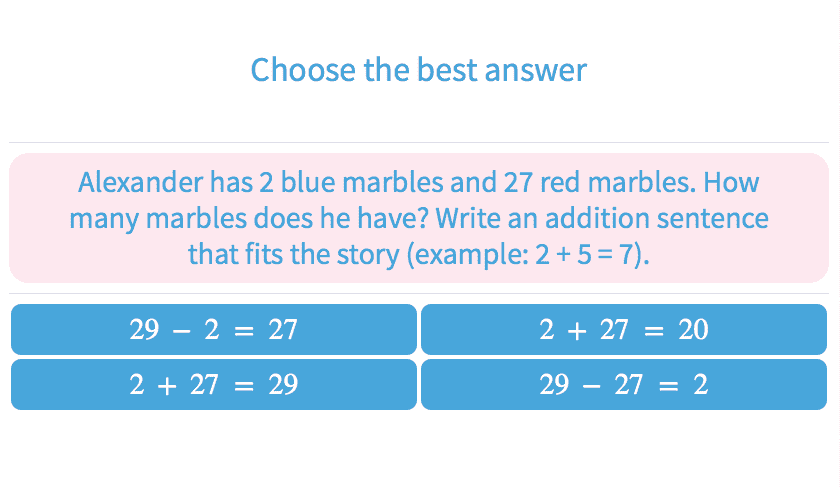
-
KS1.140Adding Doubles
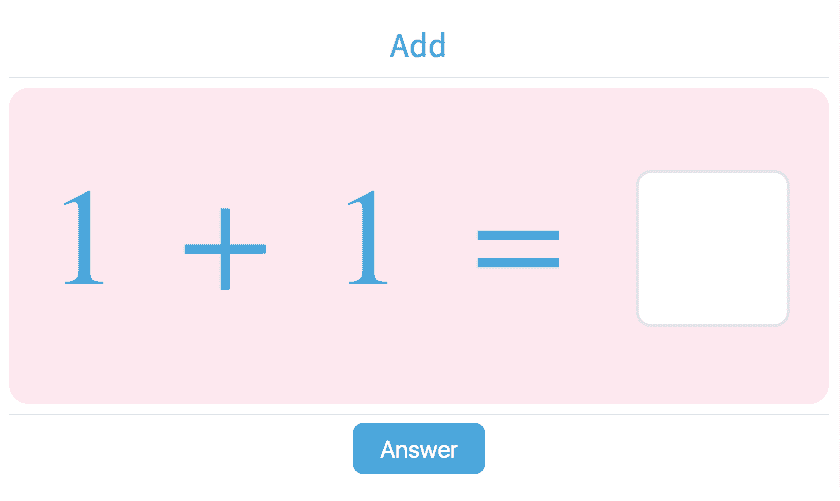
-
KS1.141Addition with Single Digit Numbers with Sums Up to 20
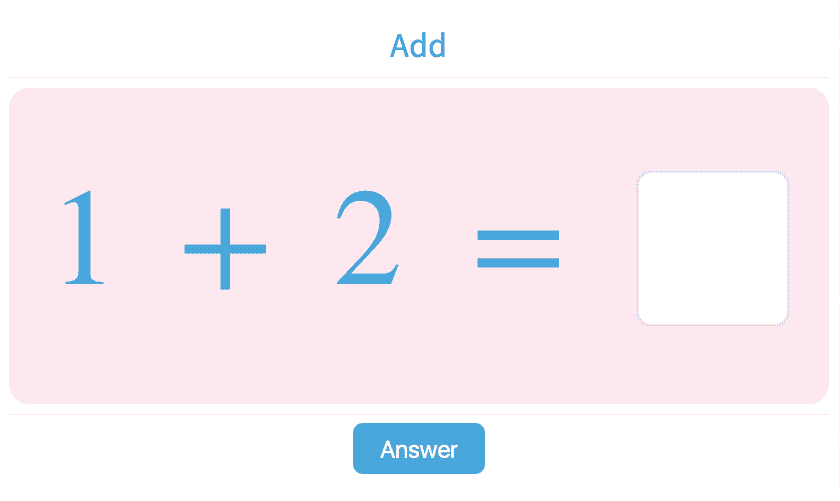
-
KS1.142Addition with a Specific Number
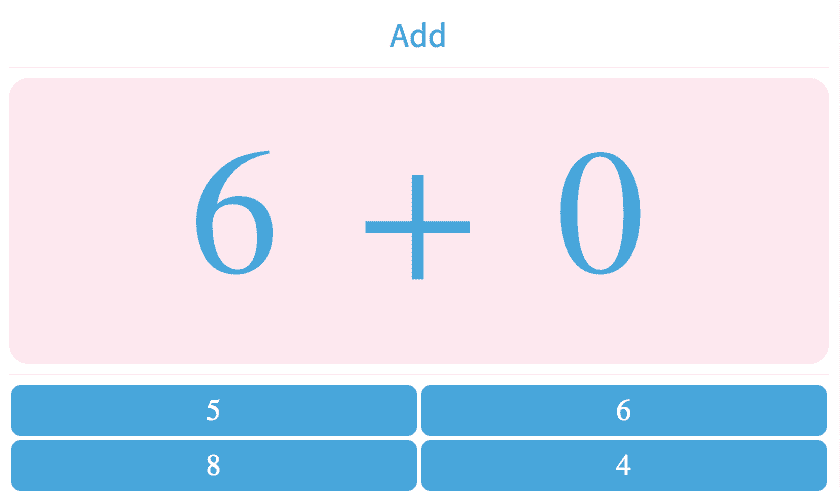
-
KS1.146Related Addition Equations Up to 1000

-
KS1.151Add Tens
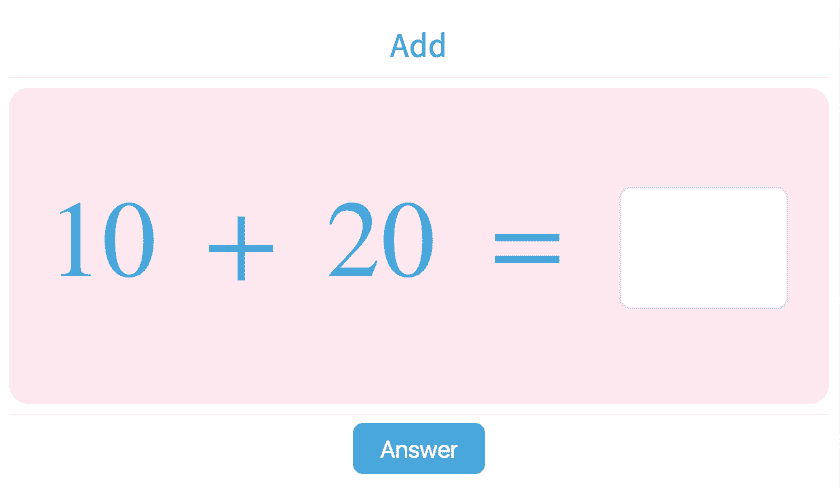
-
-
Estimation
-
KS1.31Rounding with Numbers Up to 5000
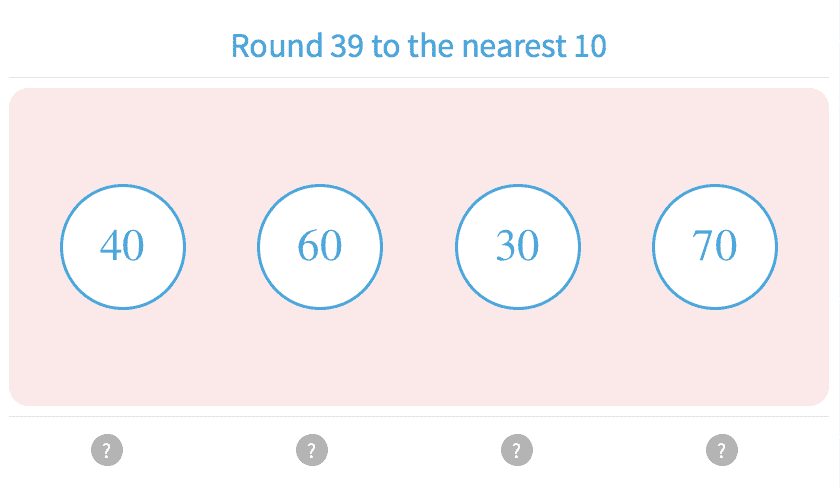
-
KS1.139Estimate Differences
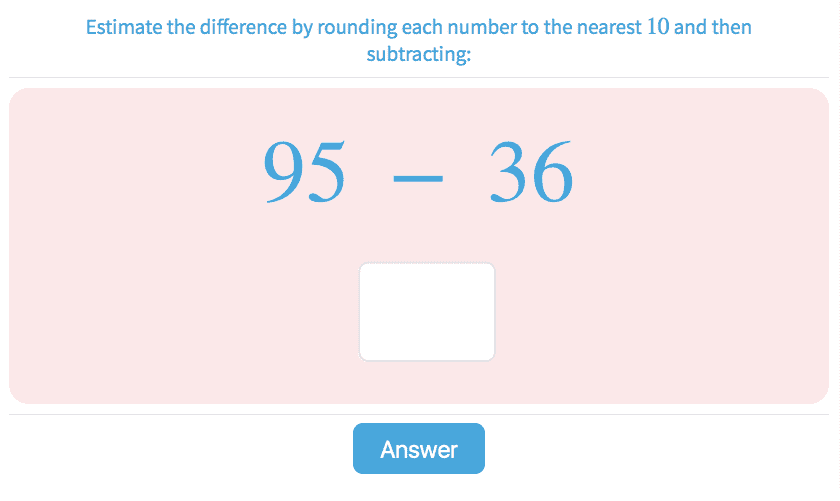
-
-
Fractions
-
KS1.32Identify Fractions Up to Fourths
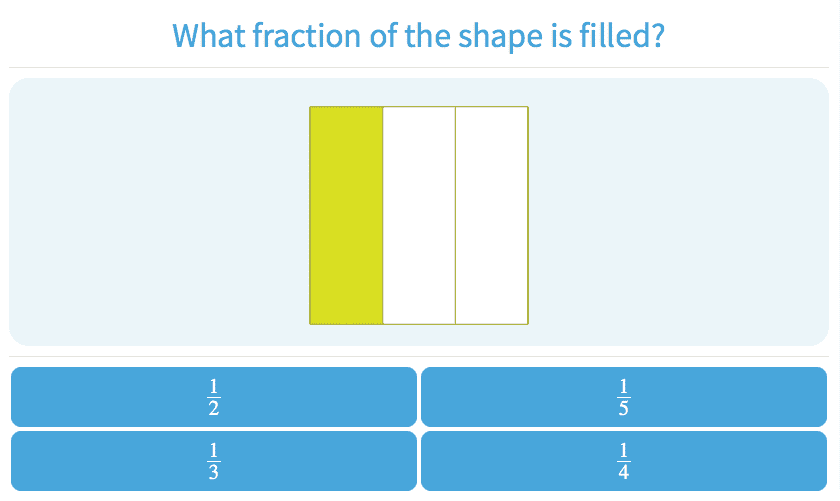
-
KS1.33Identify Fractions of Shapes
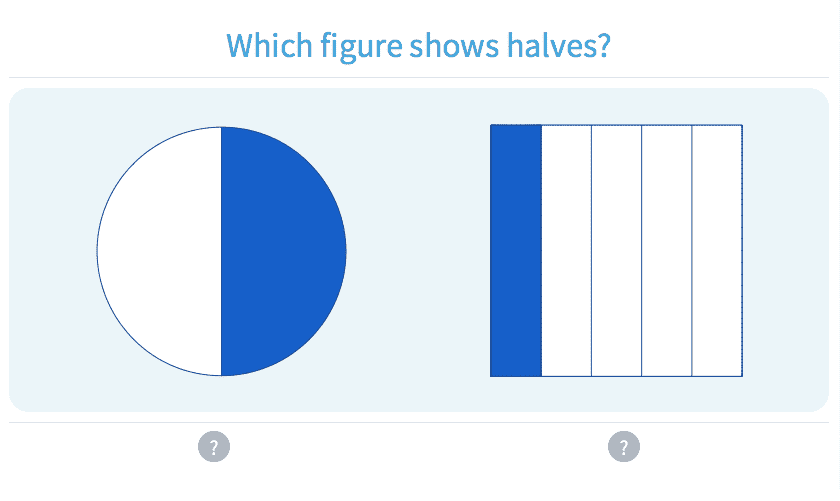
-
KS1.34Identify Fractions Up to Tenths
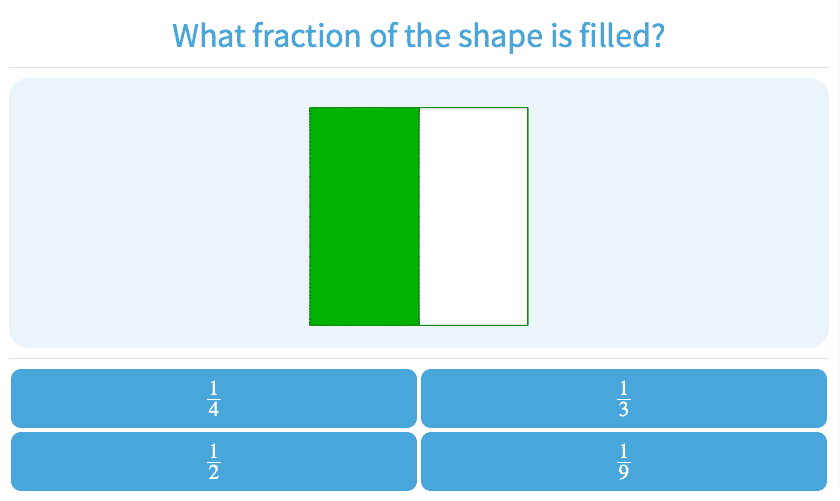
-
KS1.36Fraction
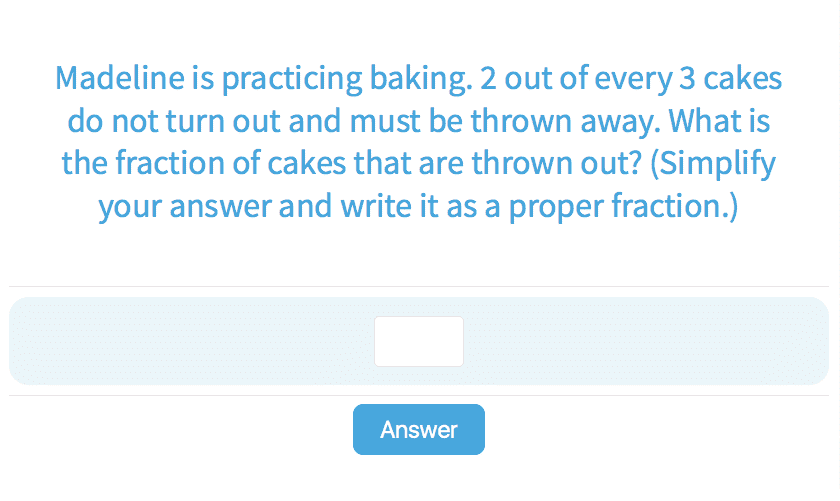
-
KS1.37Compare Fractions
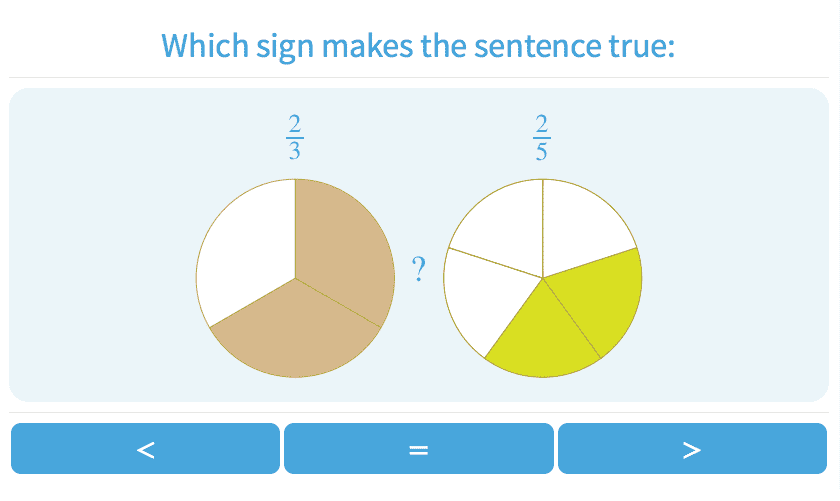
-
KS1.39What Mixed Fraction Is Shown?

-
KS1.40Choose the Equivalent Fraction

-
KS1.41Make Equivalent Fractions
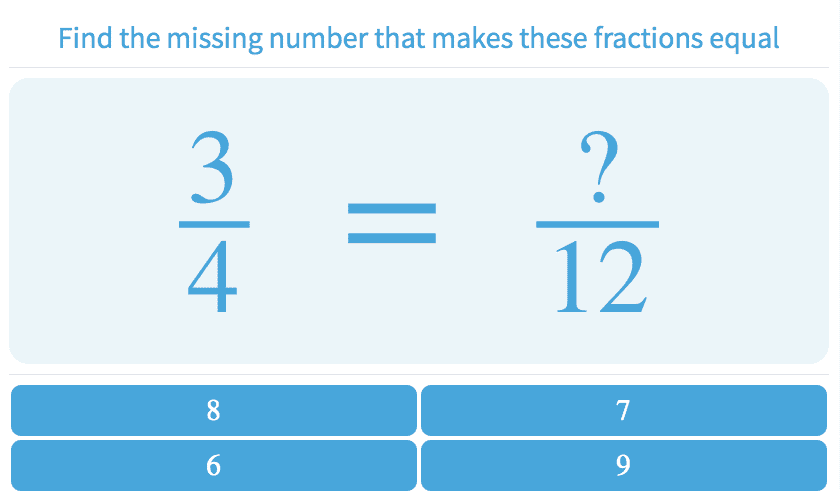
-
KS1.42Add Two Fractions

-
KS1.43Subtract Three Fractions

-
KS1.44Subtract Two Fractions

-
KS1.45Multiply Fractions by Whole Numbers
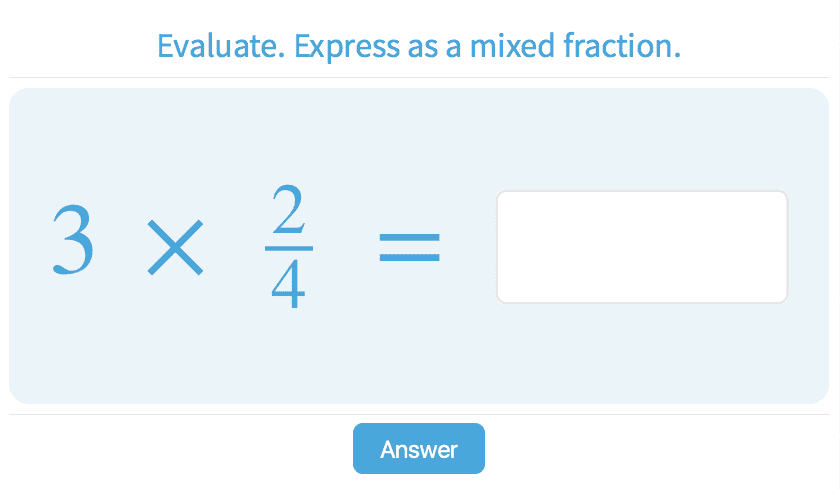
-
KS1.46Multiply Fractions by Whole Numbers
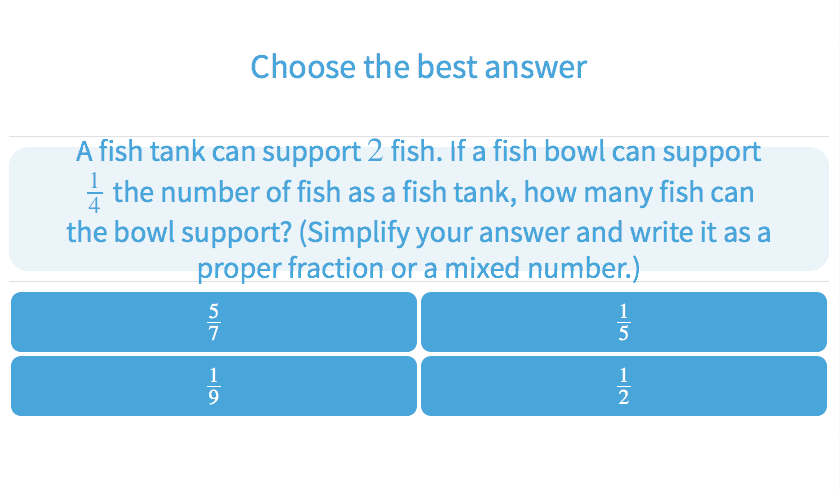
-
KS1.47Compare Fractions - Same Numerator or Denominator
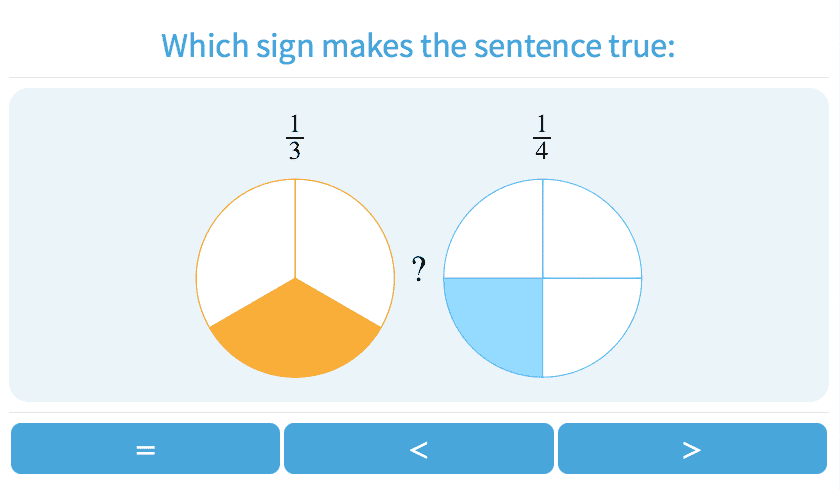
-
KS1.48Add and Subtract Fractions

-
KS1.49Add Three Fractions

-
-
Multiplication
-
KS1.45Multiply Fractions by Whole Numbers

-
KS1.46Multiply Fractions by Whole Numbers

-
KS1.132Multiplication Tables
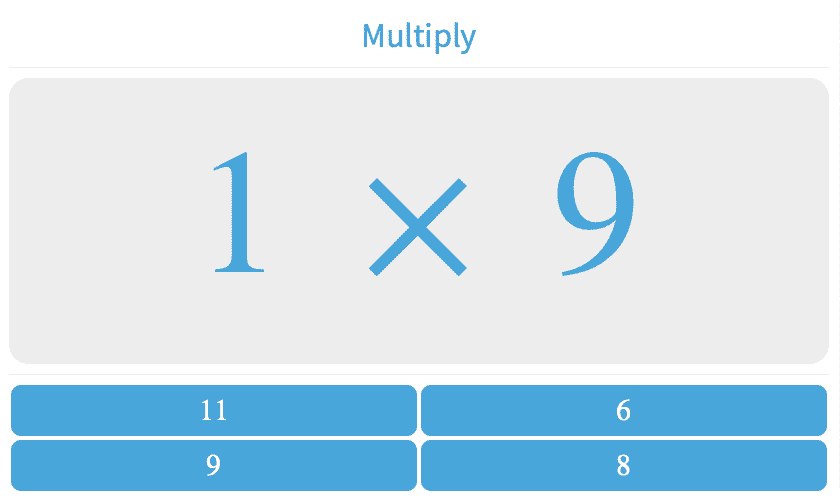
-
KS1.134Multiplication Sentences
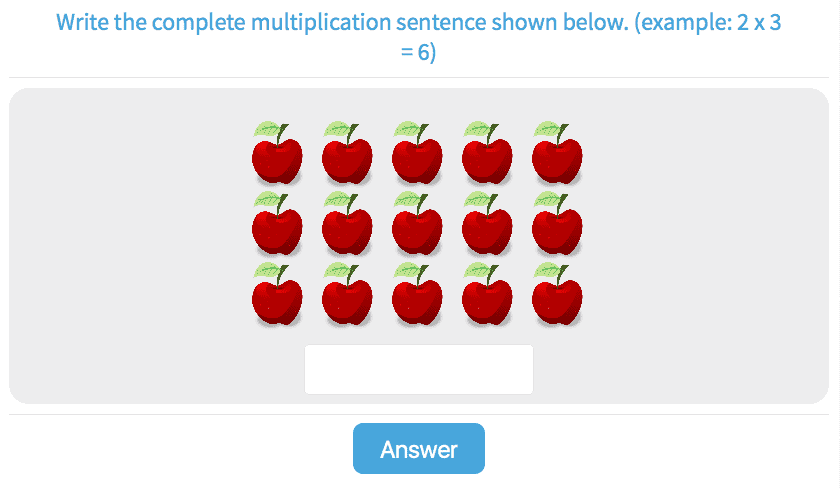
-
KS1.135Relate Addition and Multiplication

-
KS1.136Multiplication with Pictures
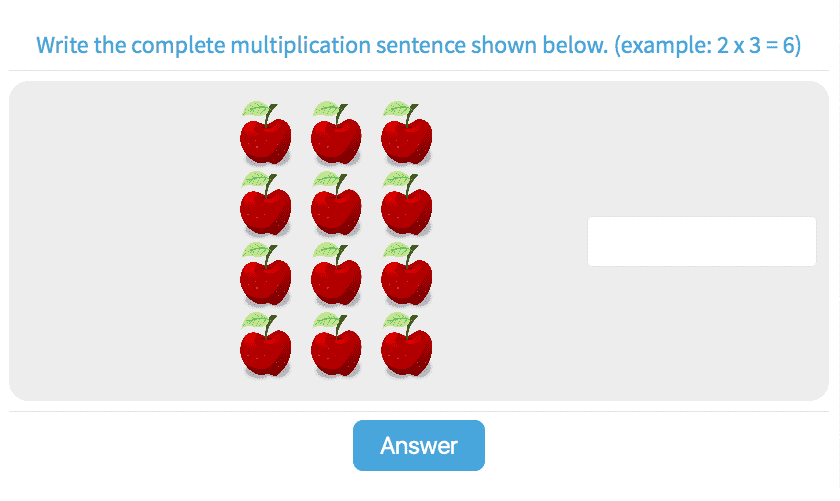
-
KS1.148Multiply Two Numbers
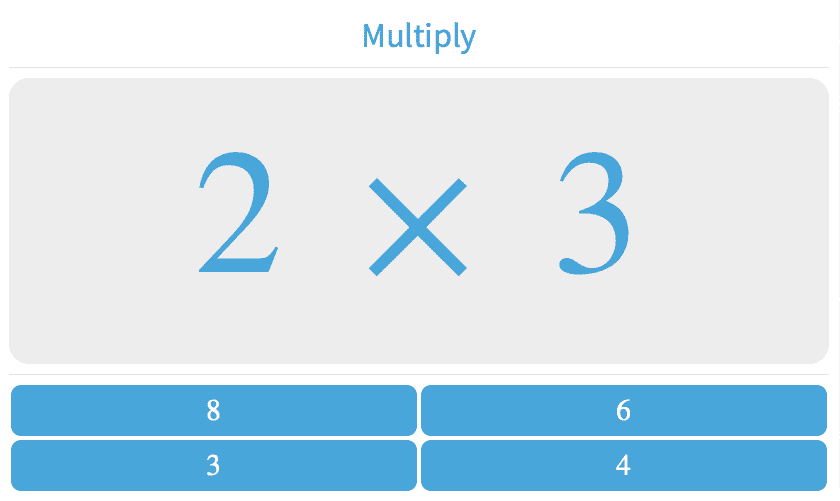
-
KS1.149Multiplication with a Specific Number Up to 12
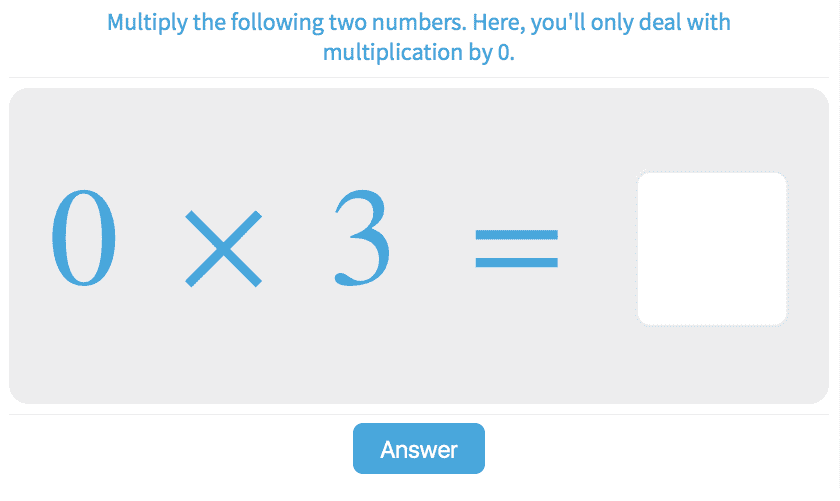
-
KS1.150Multiplication by 10
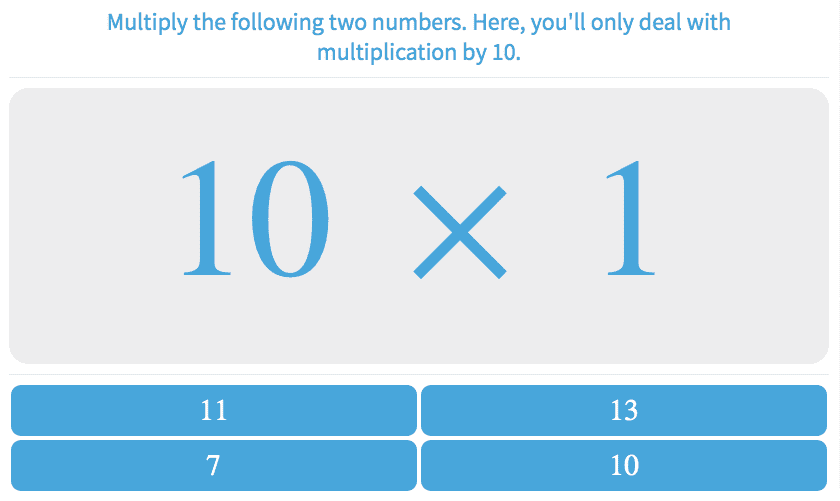
-
-
Subtraction
-
KS1.48Add and Subtract Fractions

-
KS1.69Complete the Subtraction Sentence with Numbers Up to 18
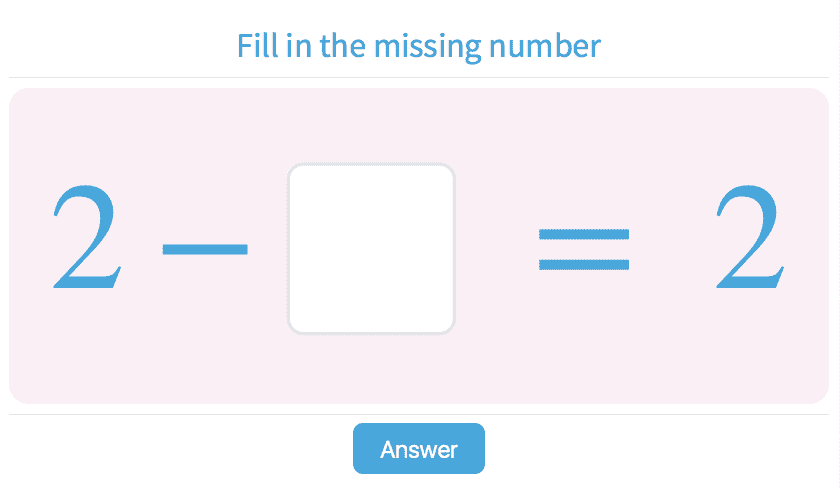
-
KS1.70Balance Subtraction Equations with Sums Up to 18
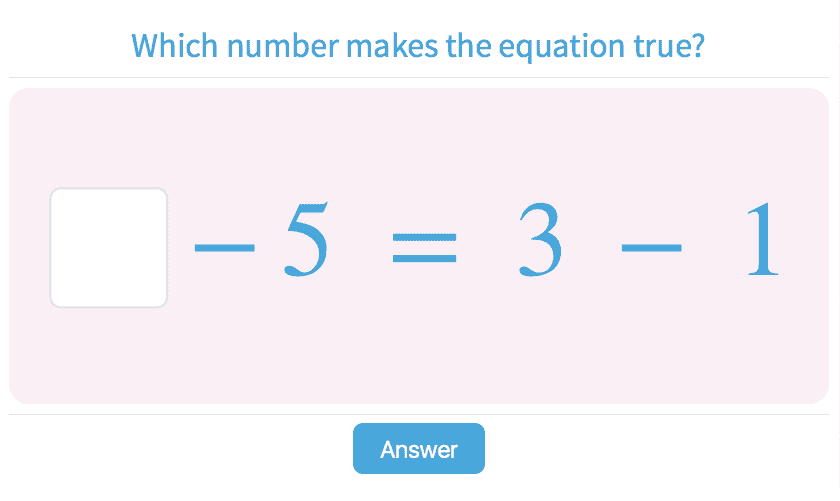
-
KS1.74Complete the Subtraction Sentence with Sums Up to 100
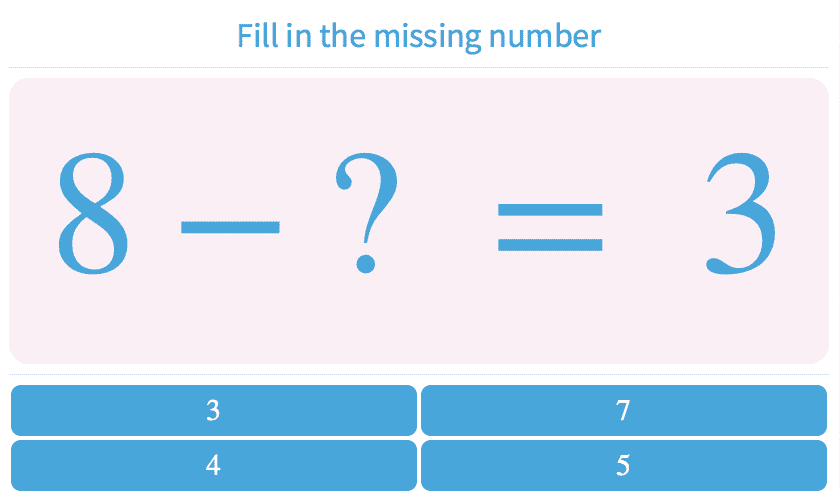
-
KS1.75Balance Subtraction Equations with Sums Up to 100
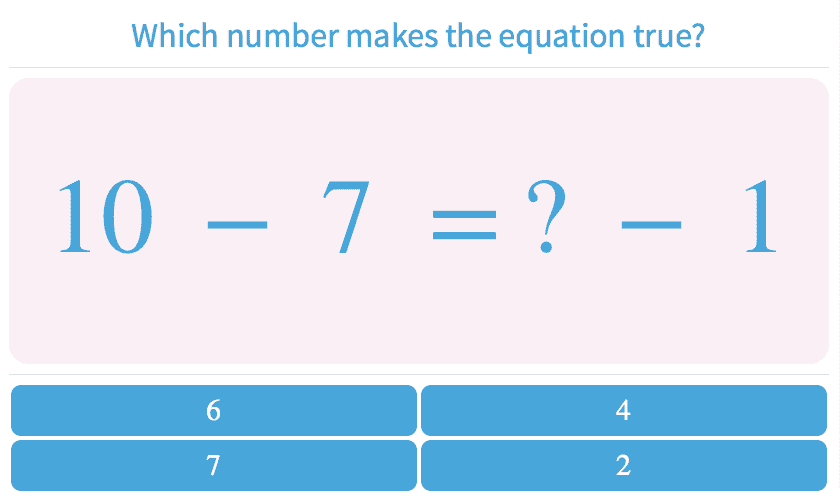
-
KS1.76Balance Subtraction Equations with Operands Up to 100
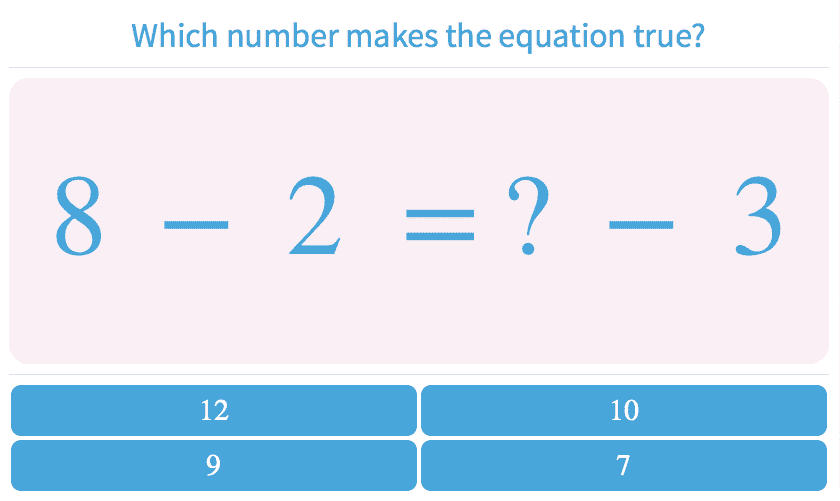
-
KS1.81Complete the Subtraction Sentence
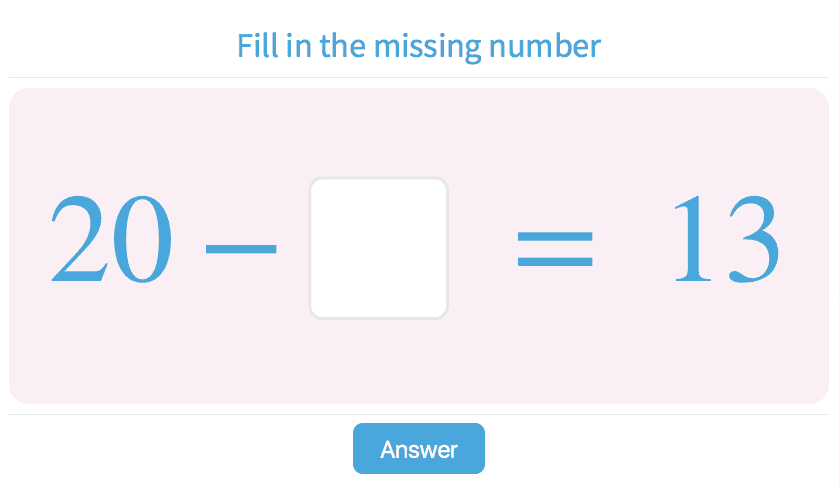
-
KS1.82Complete the Subtraction Sentence with Operands Up to 1000
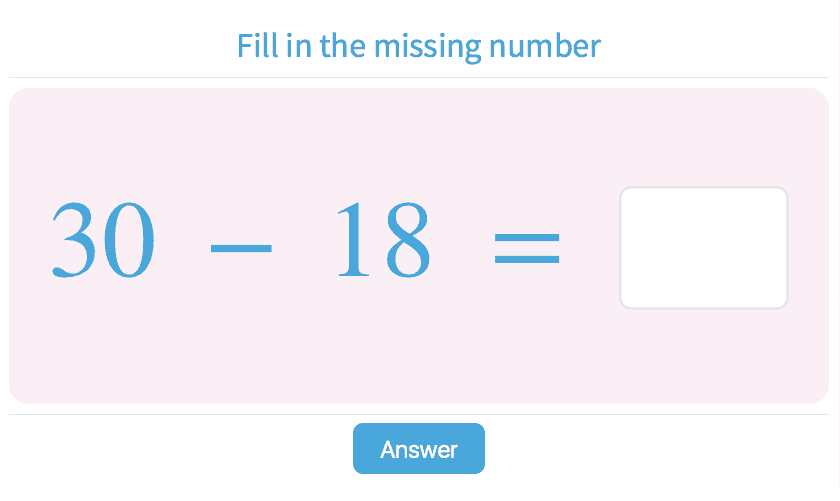
-
KS1.83Balance Subtraction Equations with Operands Up to 1000
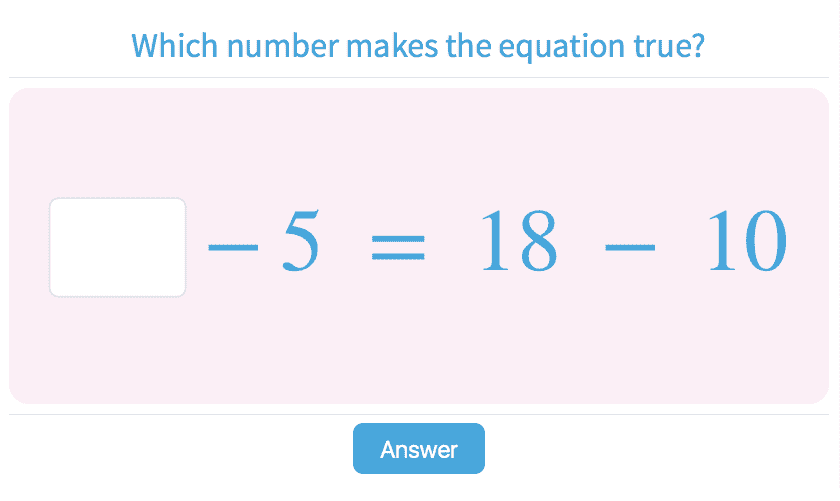
-
KS1.106Related Subtraction Equations Up to 10

-
KS1.107Choose Subtraction Pictures with Numbers Up to 10
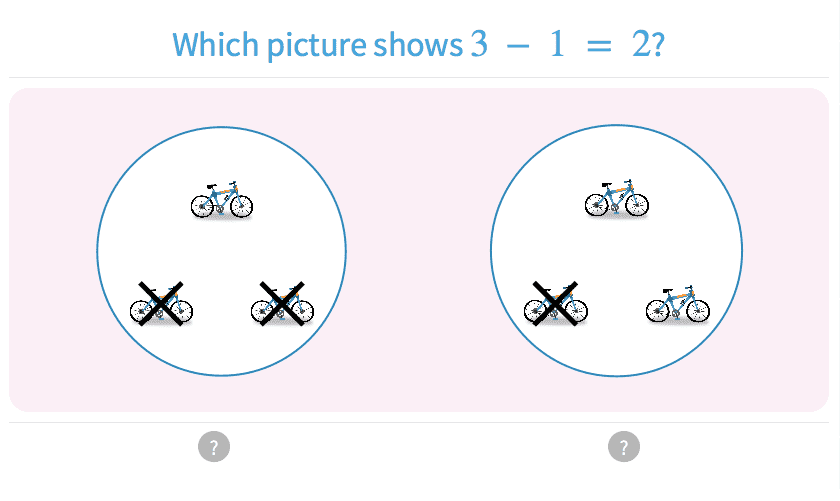
-
KS1.108Subtraction with Pictures Up to 10
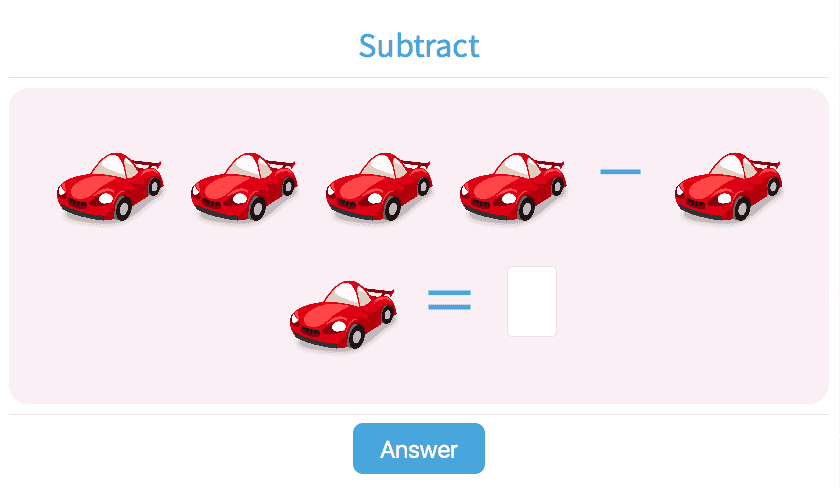
-
KS1.109Subractions Sentences to Describe Pictures
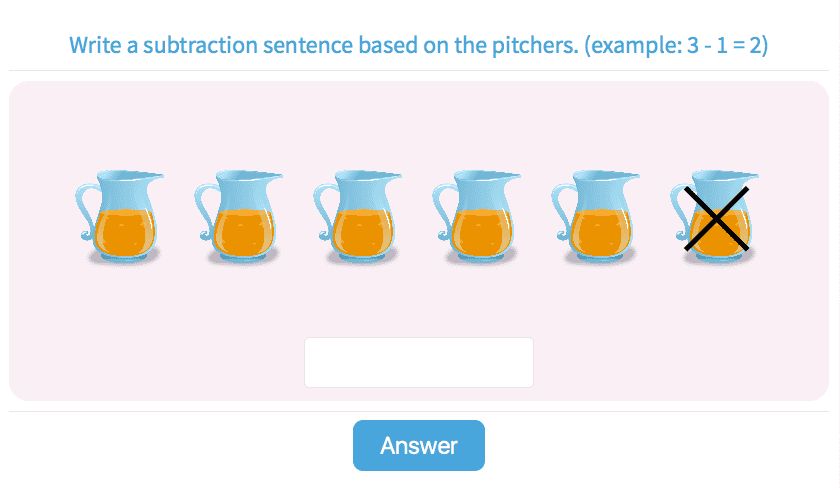
-
KS1.110Subtraction with Sums Up to 100
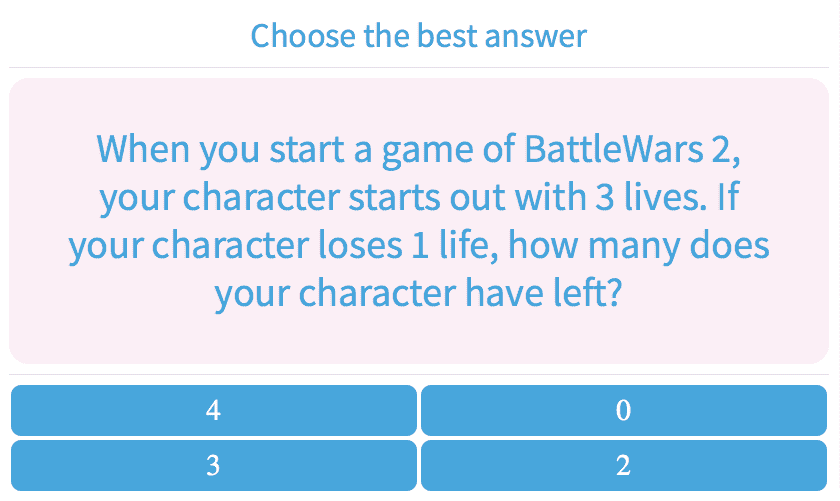
-
KS1.111Subtraction Sentences with Numbers Up to 18
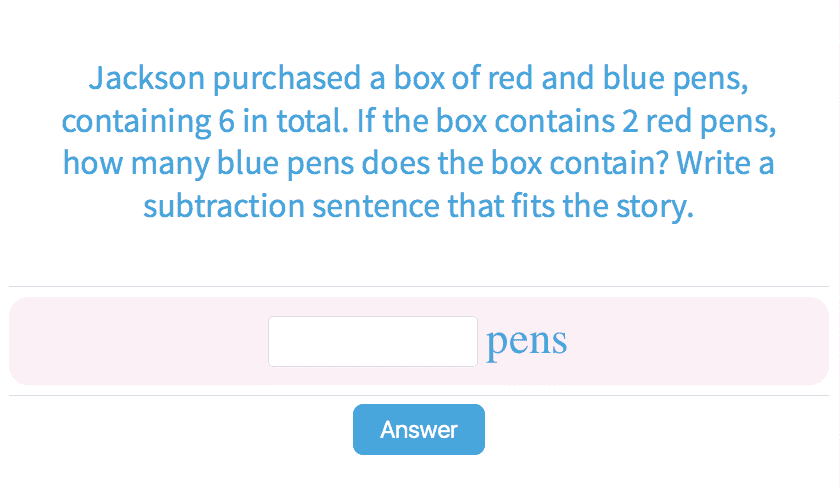
-
KS1.117Subtract Two Numbers - 1 or 2 Digits Up to 20
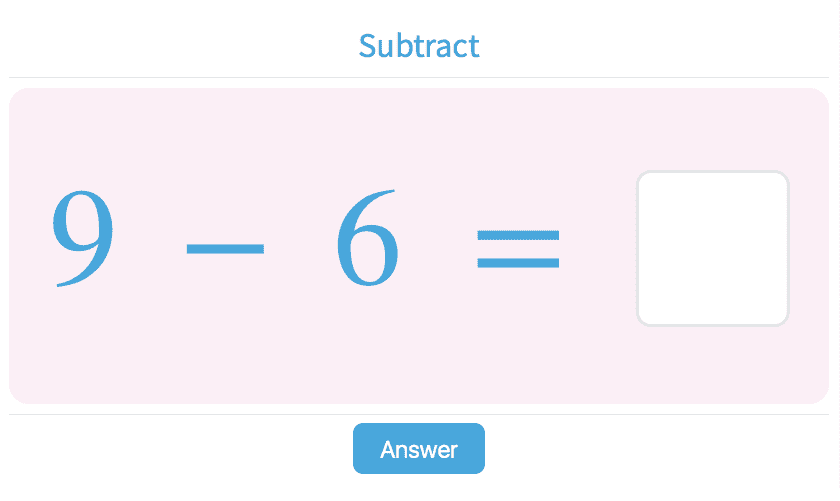
-
KS1.118Subtract One-Digit Numbers from Two-Digit Numbers
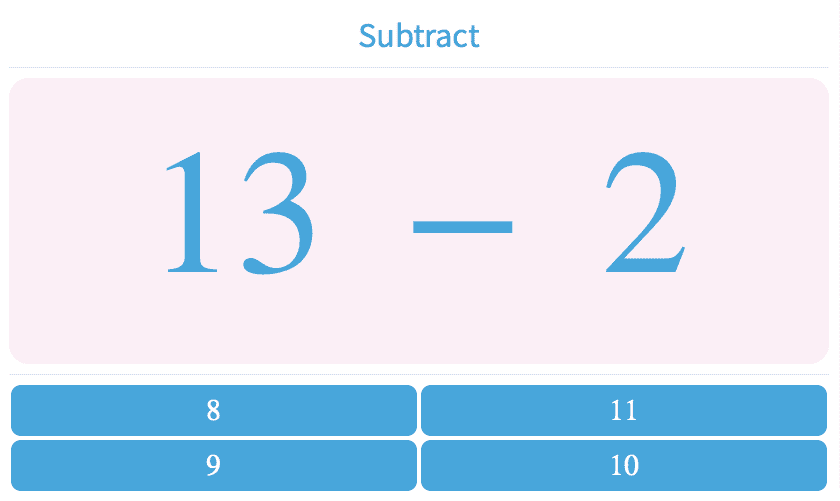
-
KS1.119Subtract Two Numbers - Single and Double Digits
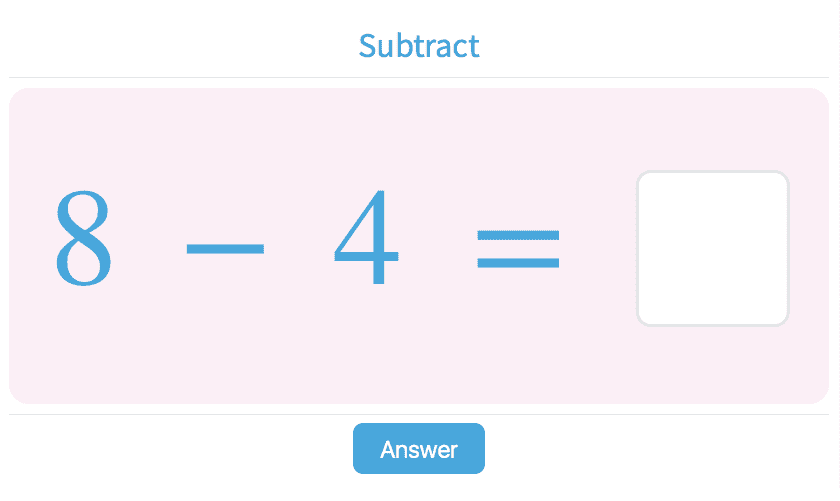
-
KS1.120Subtract Two Numbers - Double Digits Up to 100
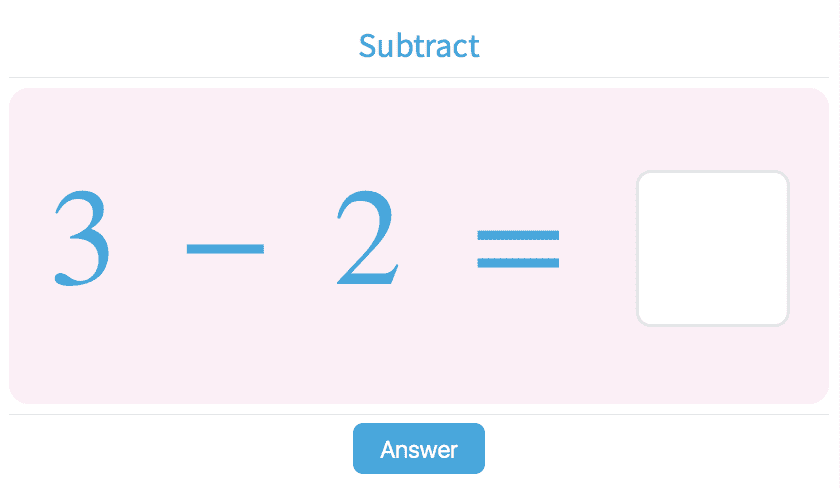
-
KS1.121Ways to Make a Number with Values Up to 100

-
KS1.123Subtraction Sentences with Sums Up to 100
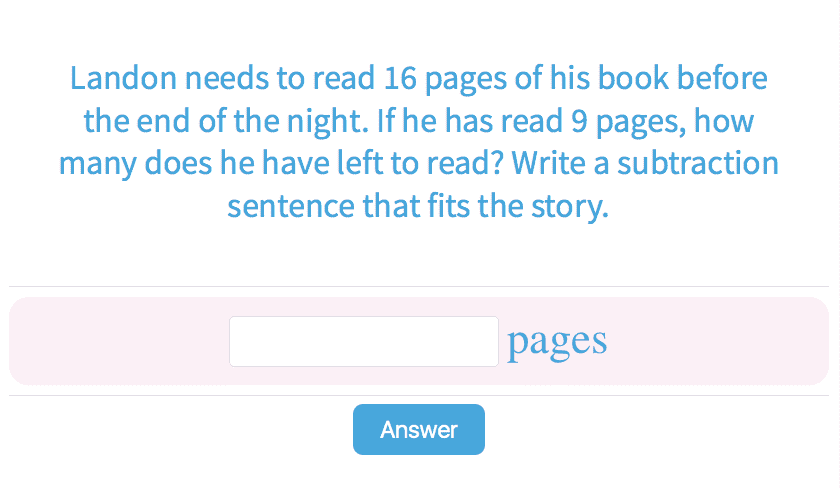
-
KS1.127Subtract Two Numbers - Multiples of 100
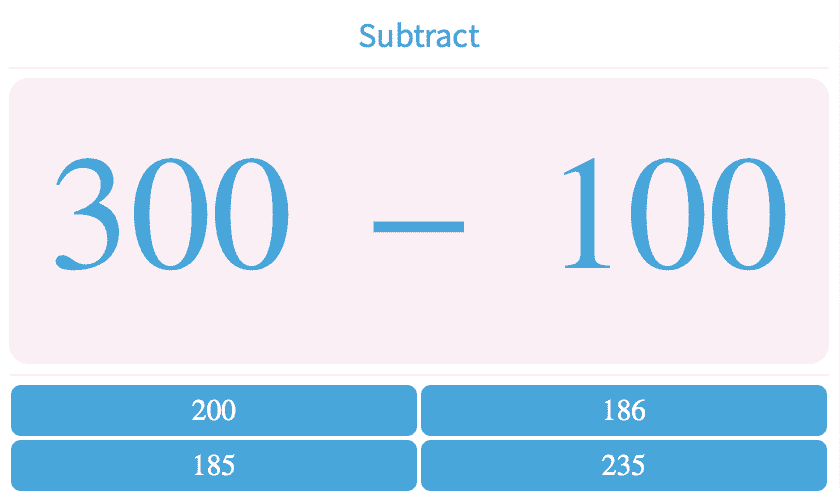
-
KS1.128Subtract Two Numbers - Multiples of 10
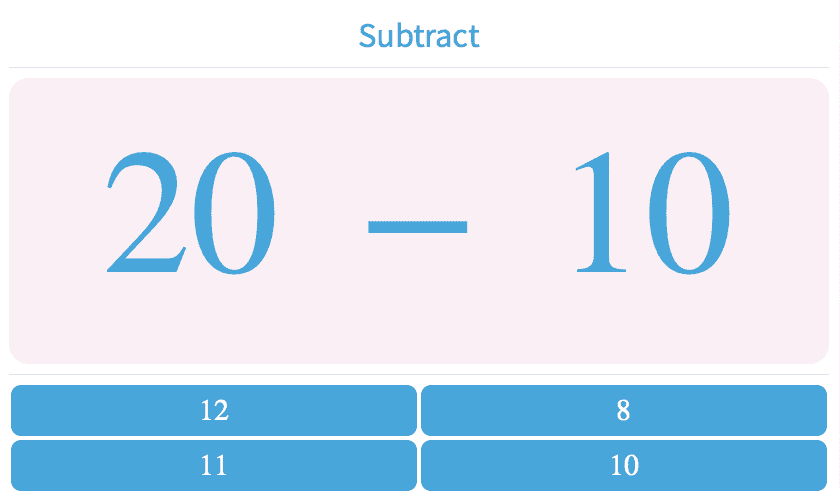
-
KS1.129Subtract Two Numbers - Operands Up to 1000
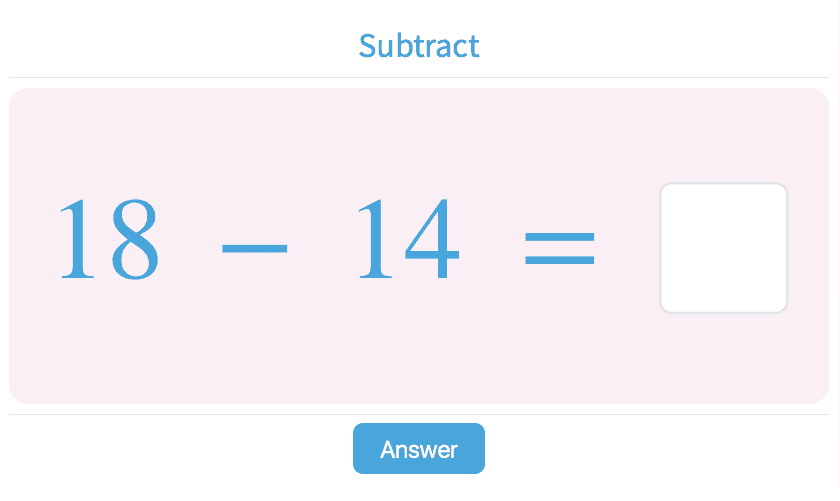
-
KS1.130Subtraction with Operands Up to 1000
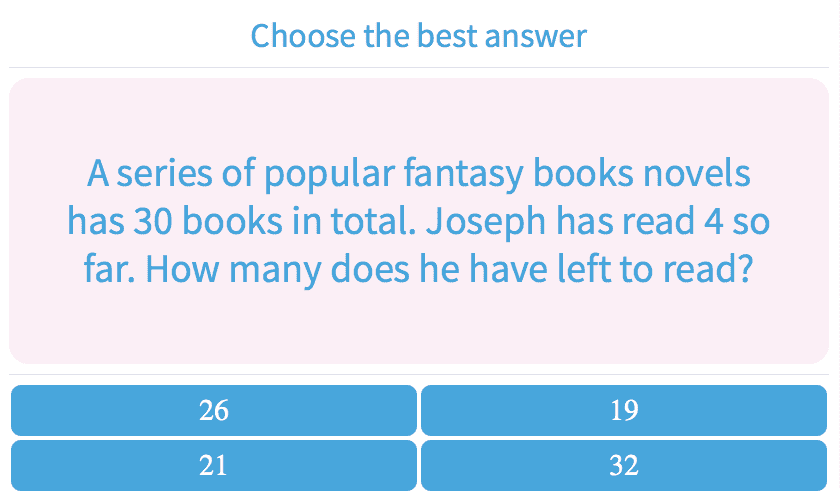
-
KS1.133Fill in the Missing Digits
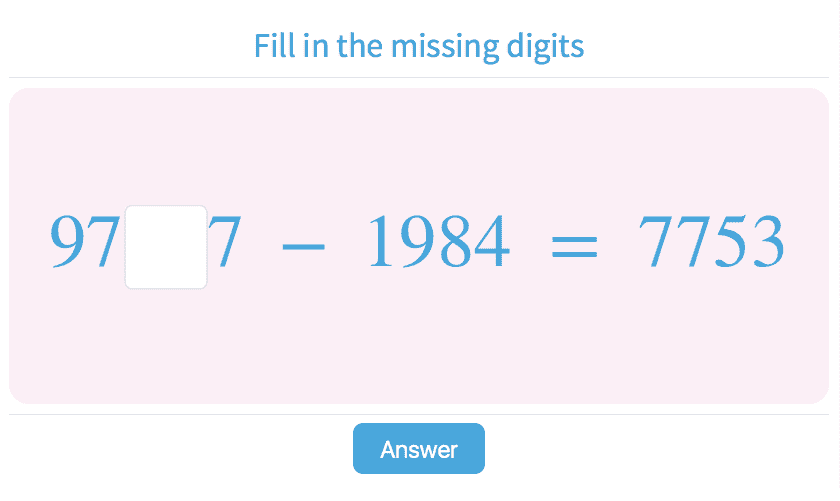
-
KS1.143Subtracting Doubles
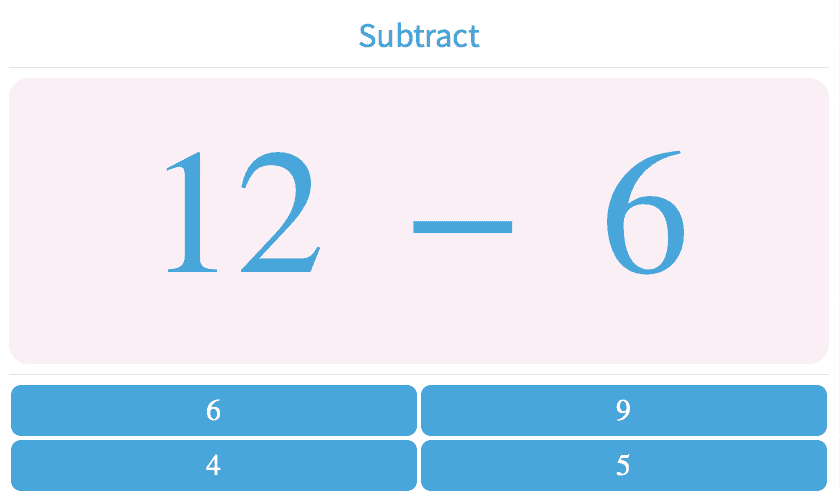
-
KS1.144Subtract Two Numbers Up to 18
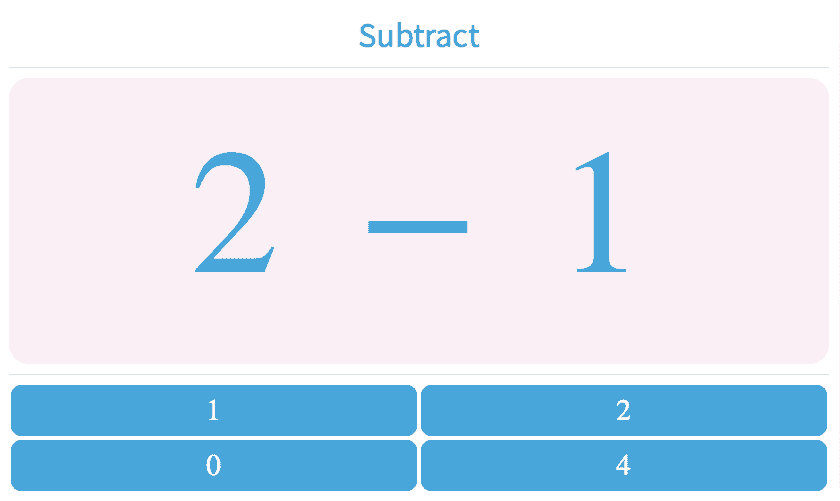
-
KS1.145Subtracting Zero and All
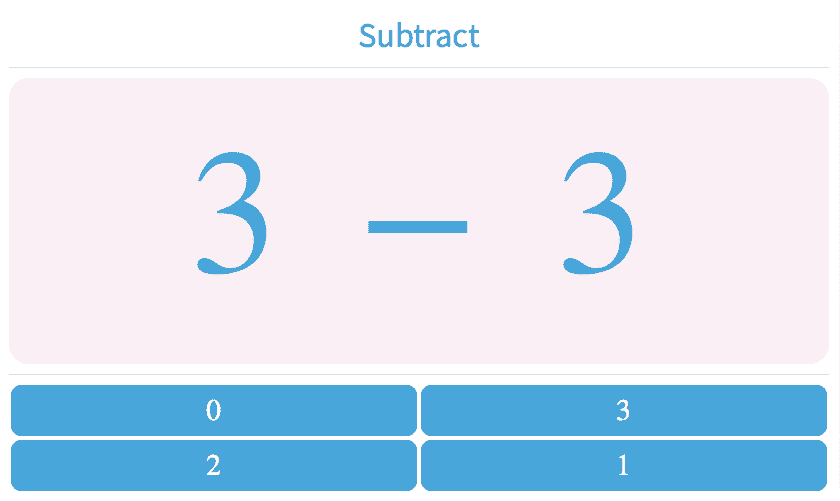
-
KS1.147Related Subtraction Equations with Sums Up to 1000

-
KS1.152Subtract Tens
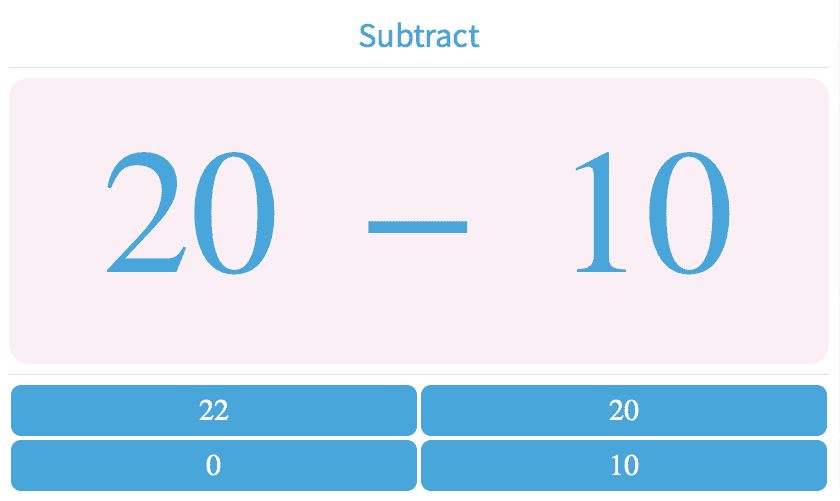
-
- Algebra
-
Money
-
KS1.155Least Number of Coins
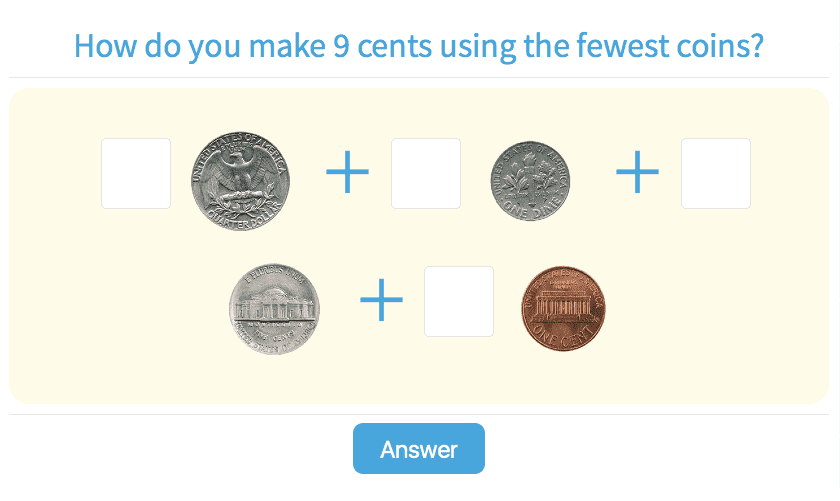
-
KS1.156Making Change Up to $20
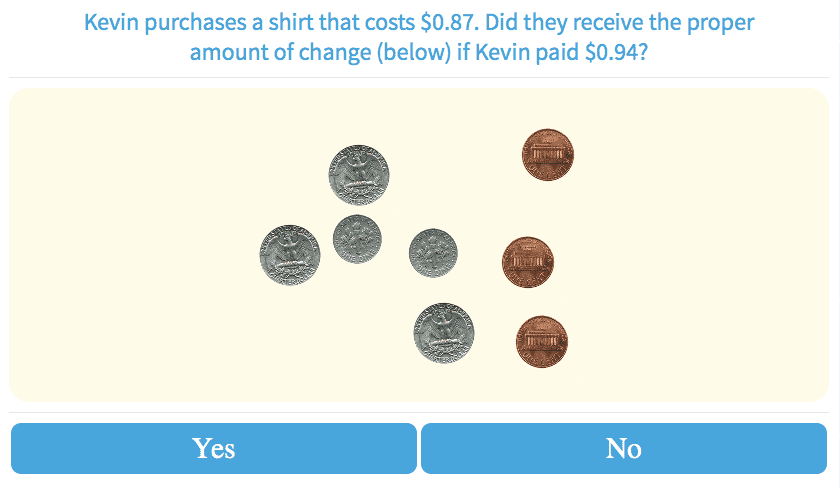
-
KS1.157Making Change Up to $5
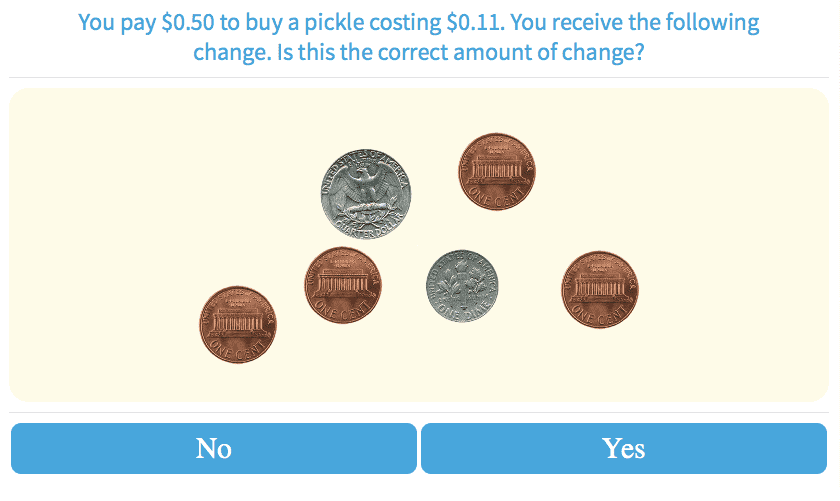
-
KS1.160Add and Subtract Money: Up to $10,000
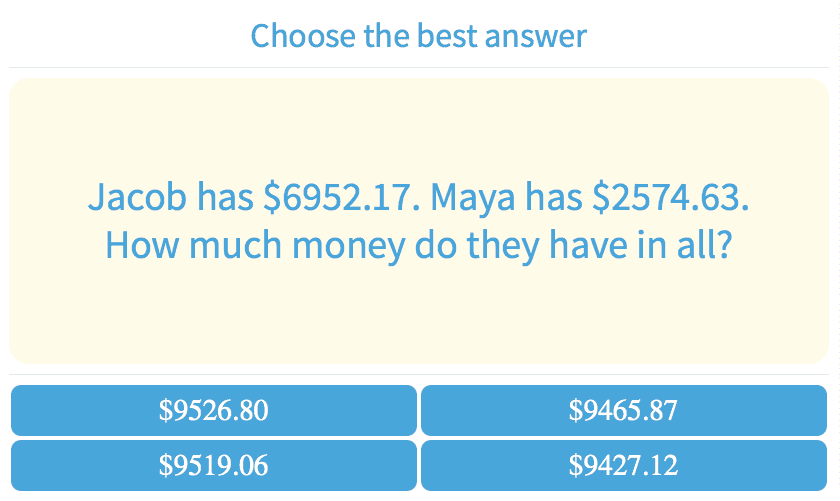
-
KS1.161Add and Subtract Money
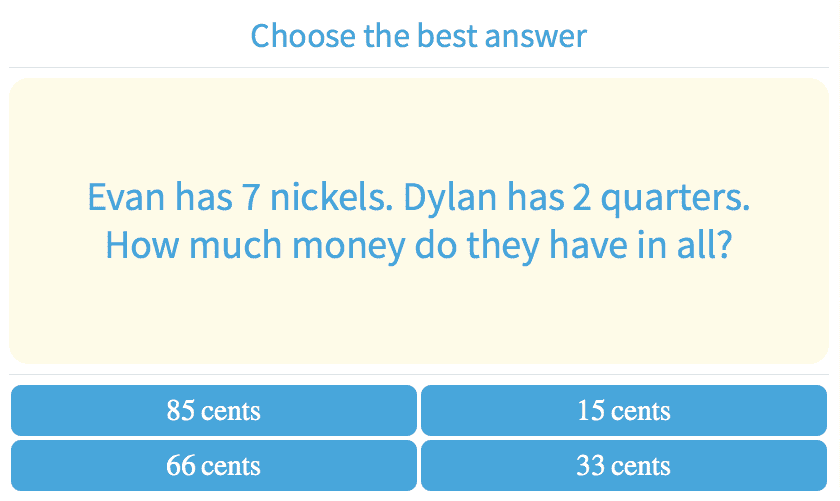
-
-
Time
-
KS1.164Match Clocks and Time
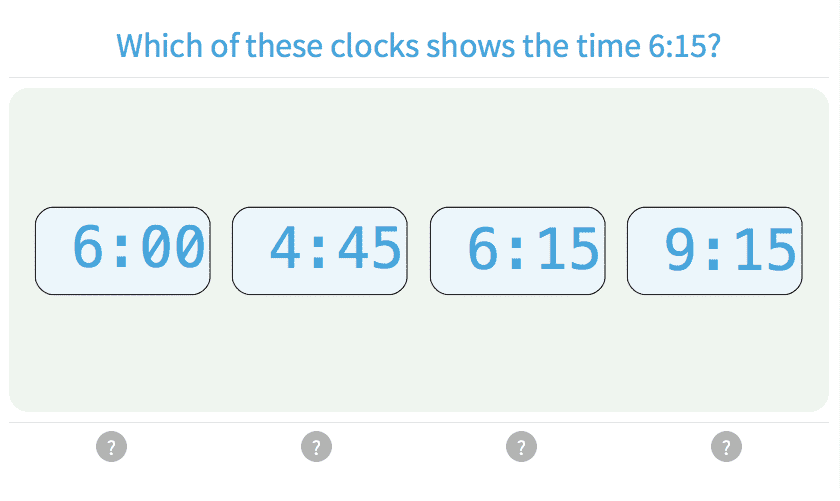
-
KS1.165Reading Clocks
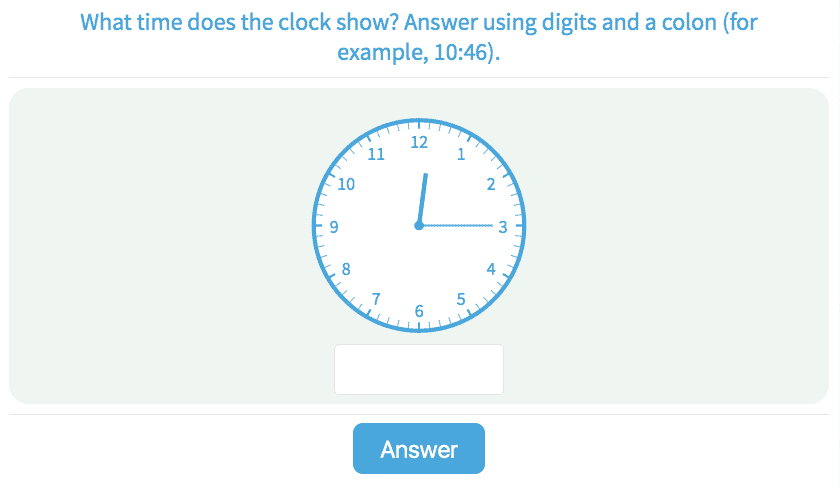
-
KS1.172Reading Clocks
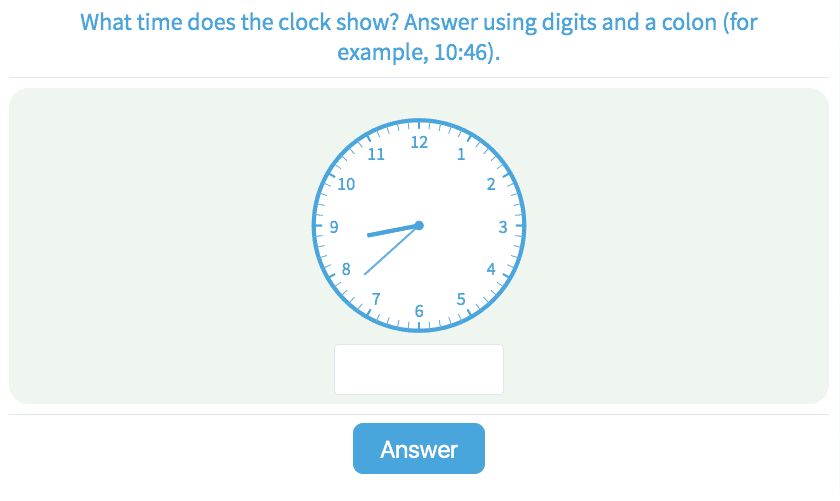
-
KS1.173Match Analog and Digital Clocks
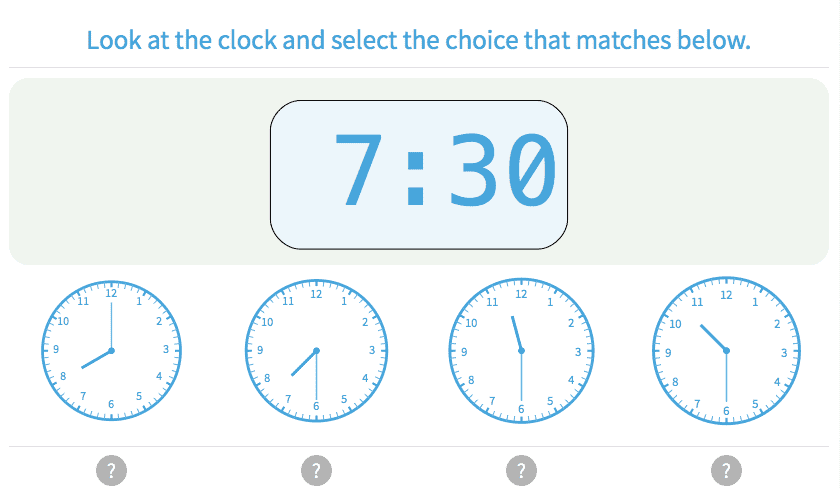
-
KS1.182Reading Clocks
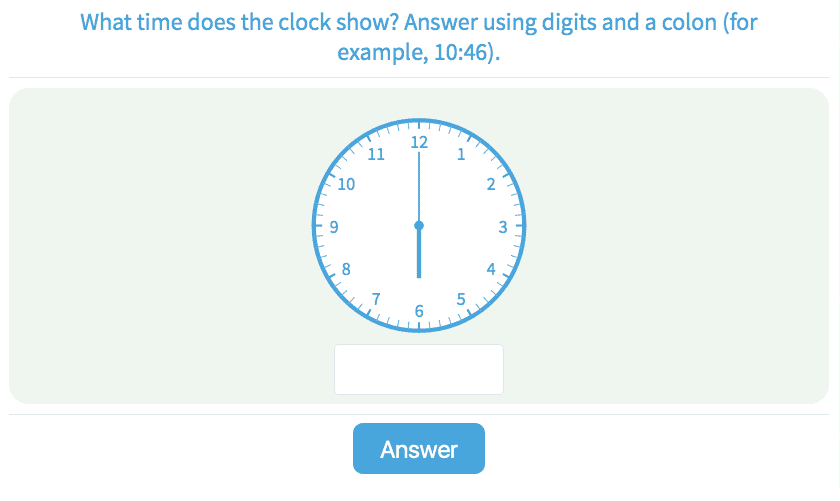
-
KS1.183Compare Clocks

-
-
Measurement
-
KS1.167Long and Short

-
KS1.168Tall and Short

-
KS1.169Light and Heavy

-
KS1.170Holds More or Less

-
KS1.171Compare Size, Weight and Capacity

-
KS1.174Metric Units of Length: 3 Numbers
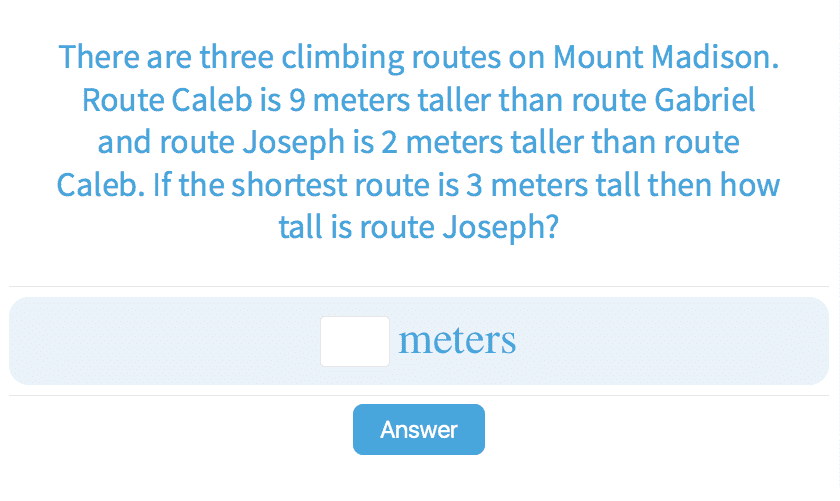
-
KS1.175Metric Units of Length: Using 3 Numbers
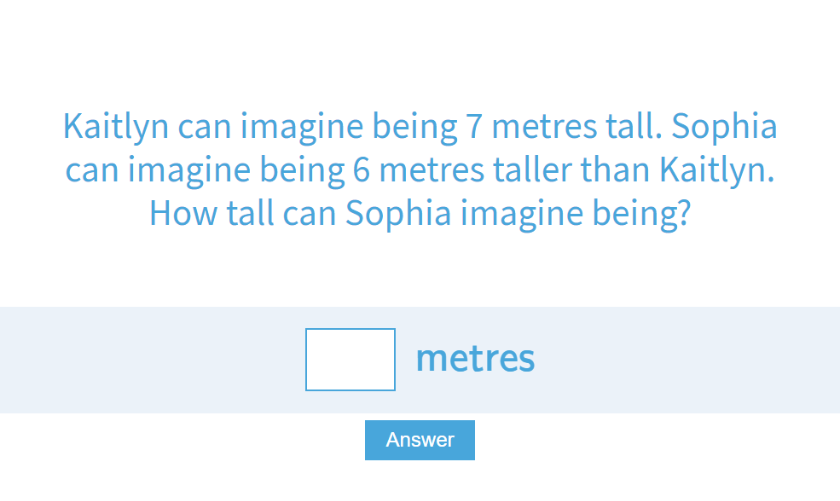
-
KS1.176Metric Units of Length
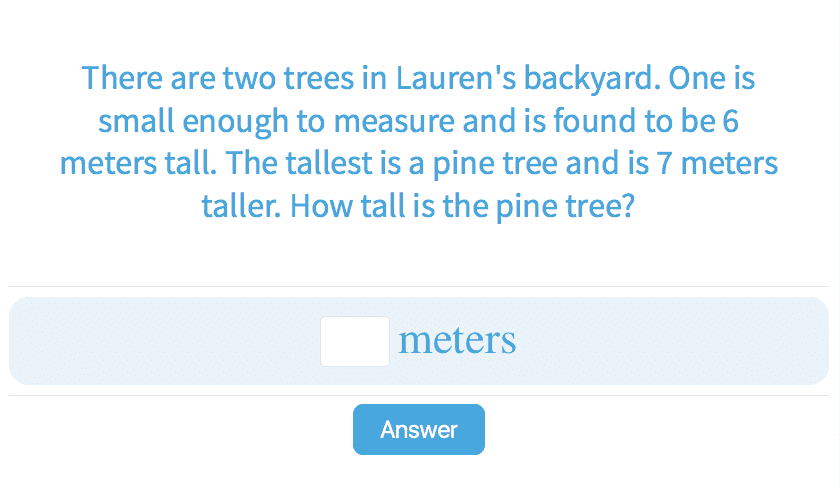
-
KS1.177Metric Units of Length Up to 100
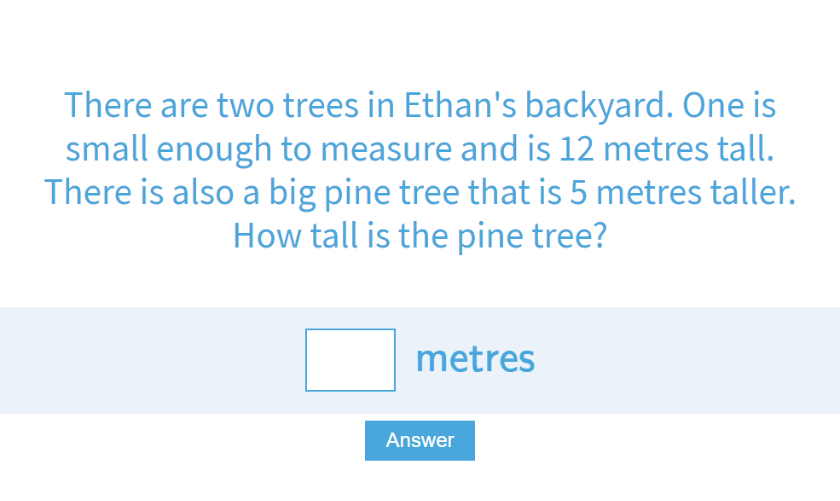
-
KS1.178Compare and Convert Metric Units
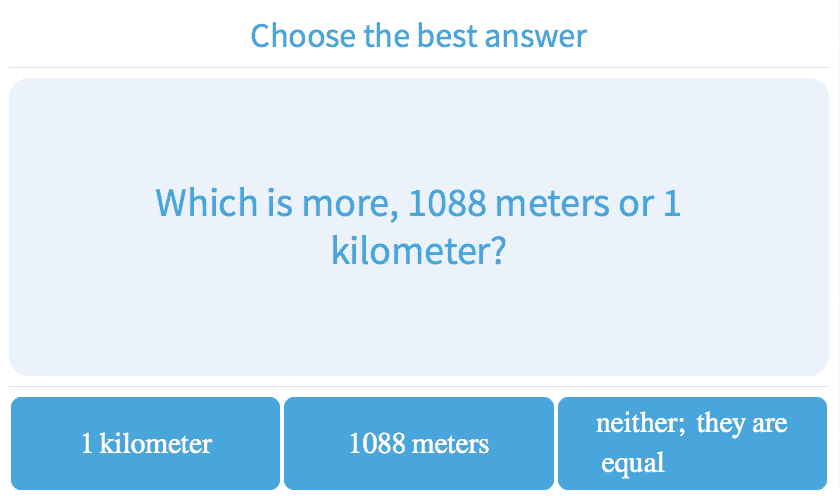
-
KS1.179Which Metric Unit of Length Is Appropriate?
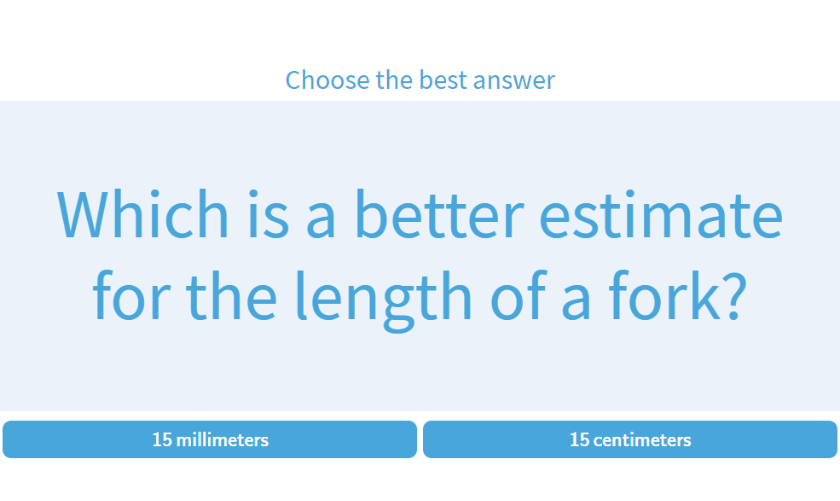
-
KS1.180Which Metric Unit Is Appropriate?
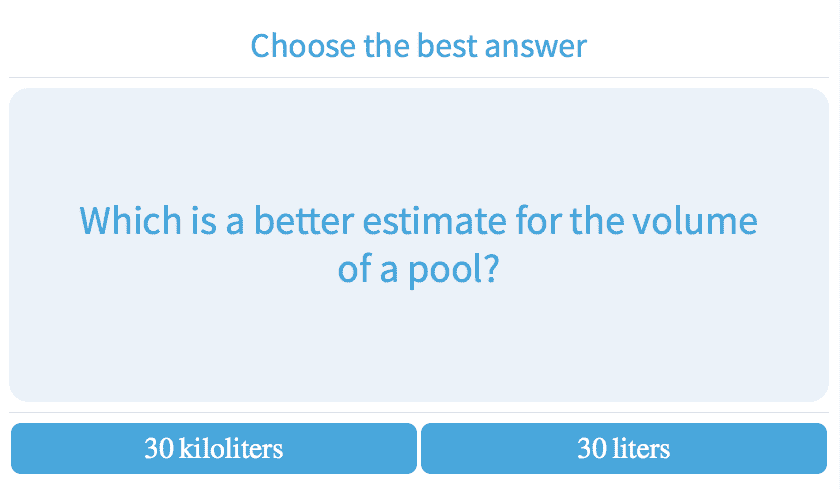
-
-
Geometry
-
KS1.184Compare Sides and Corners
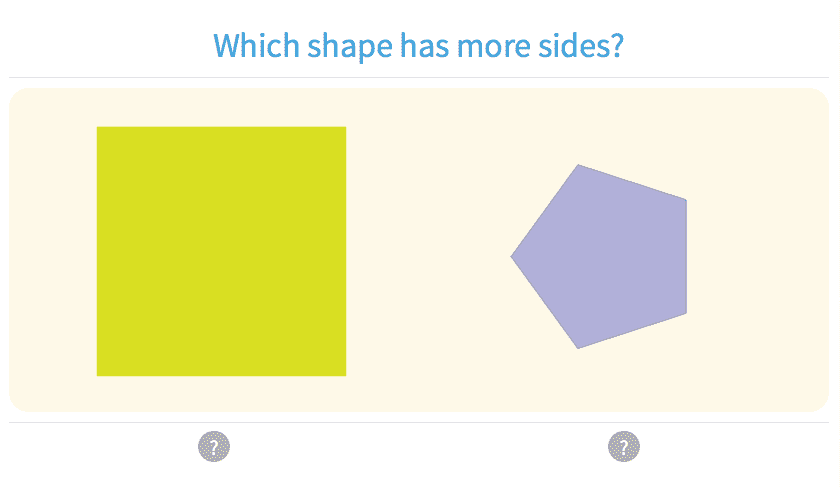
-
KS1.185Identify Same Shapes

-
KS1.186Comparing Objects - Same / Different

-
KS1.187Count Edges
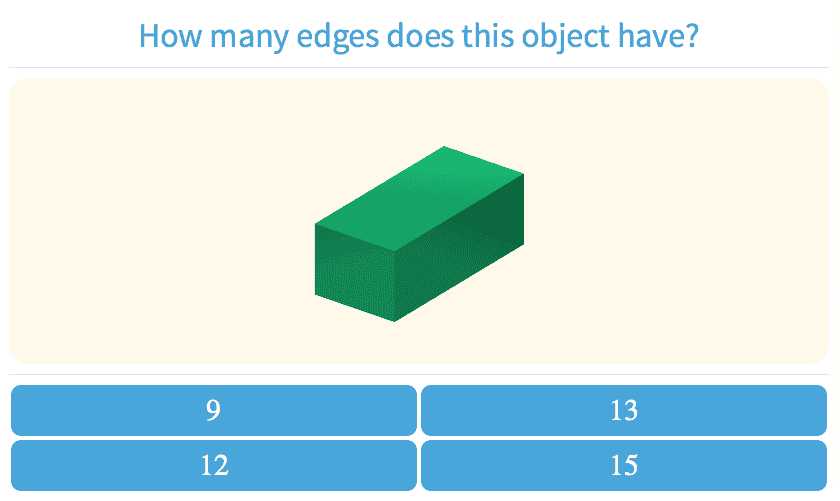
-
KS1.188Count Vertices
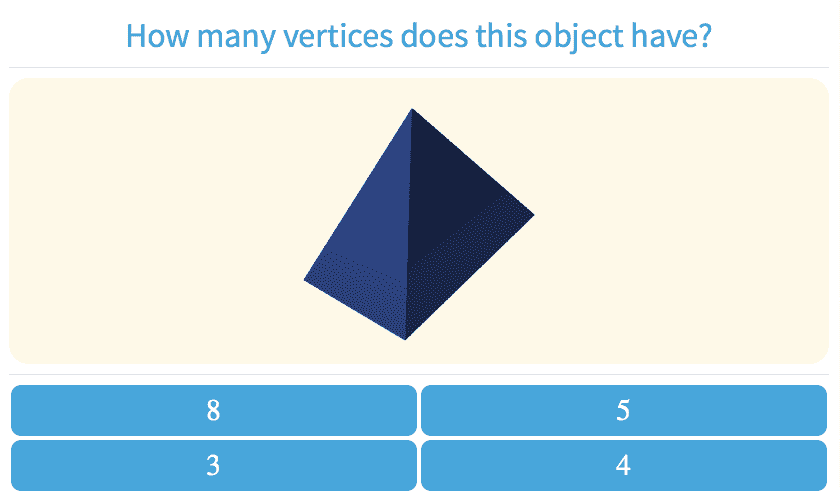
-
KS1.189Count Faces
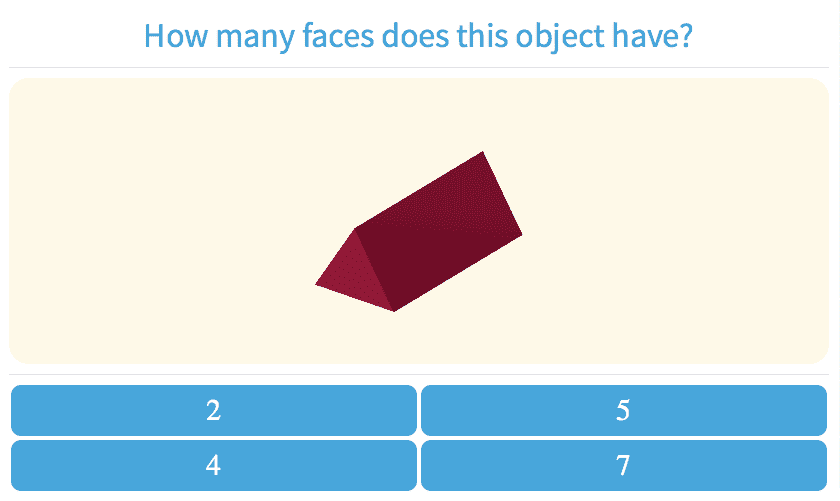
-
KS1.190Count Edges, Vertices and Faces
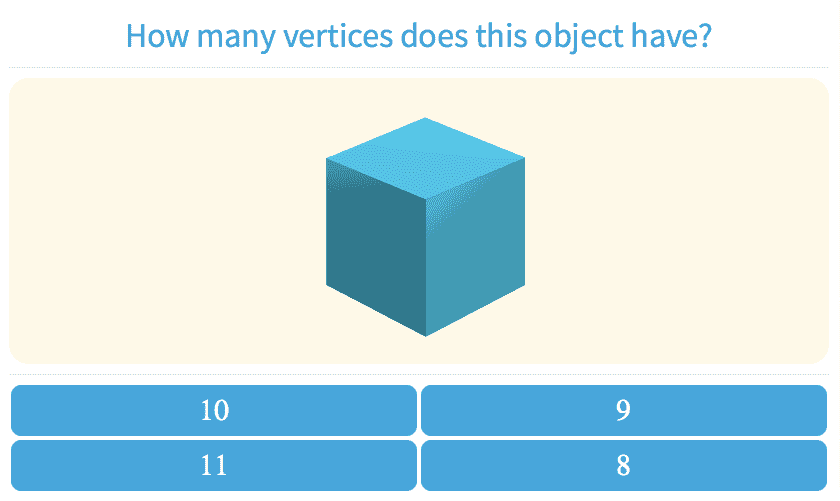
-
KS1.191Relate Planar and Solid Figures
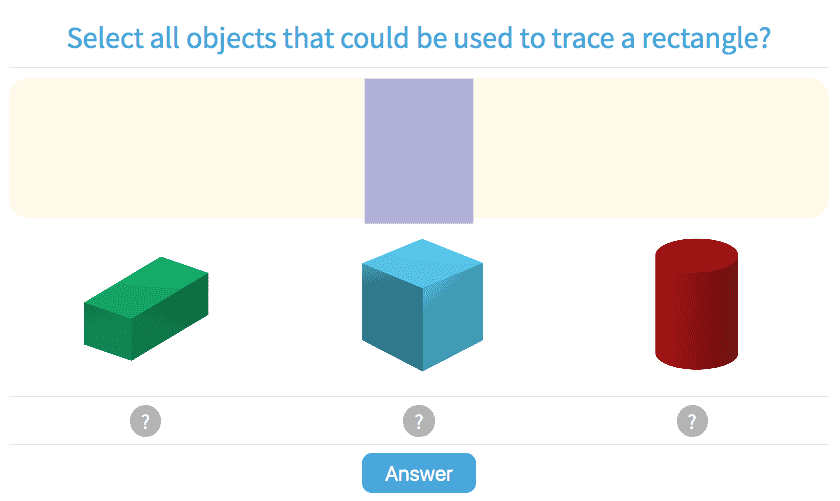
-
KS1.192Identify Shapes I
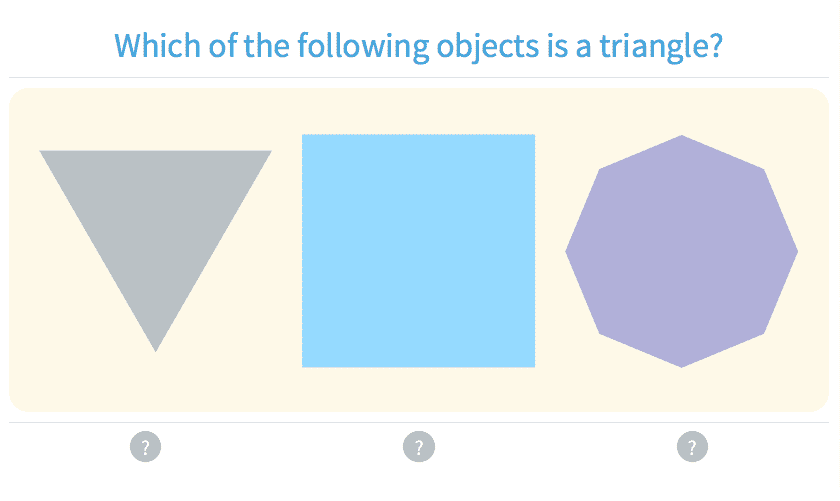
-
KS1.193Identify Simple Planar and Solid Shapes
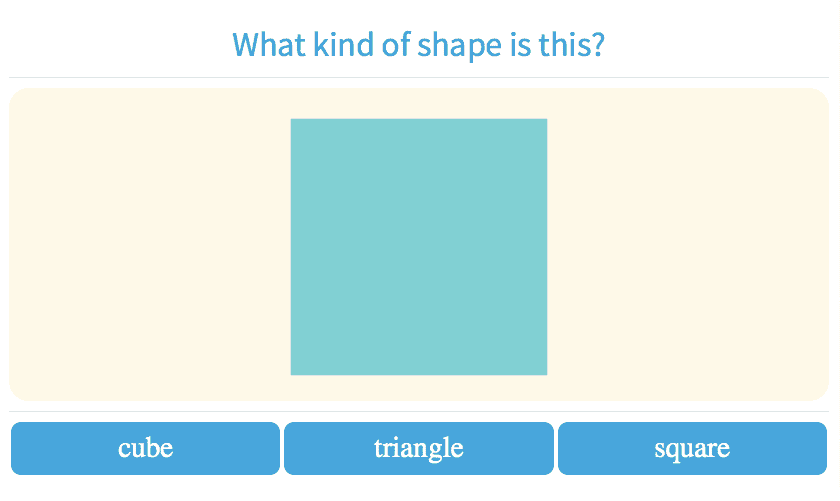
-
KS1.194Identify Shapes II
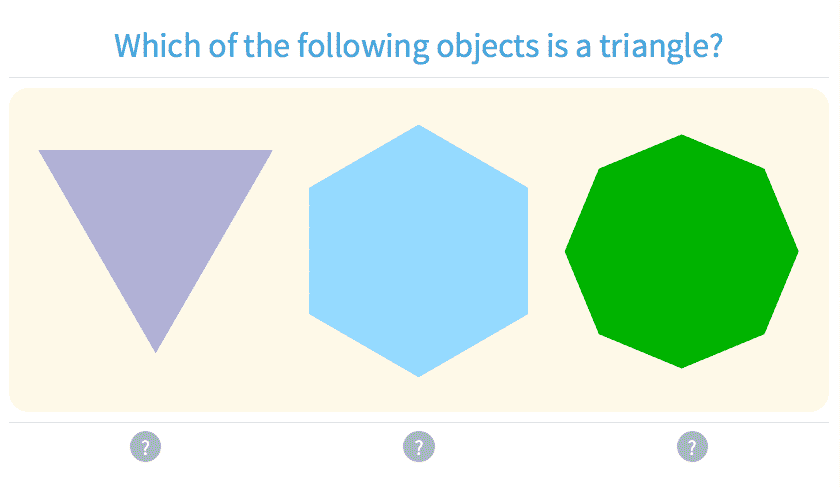
-
KS1.195Count Sides and Corners
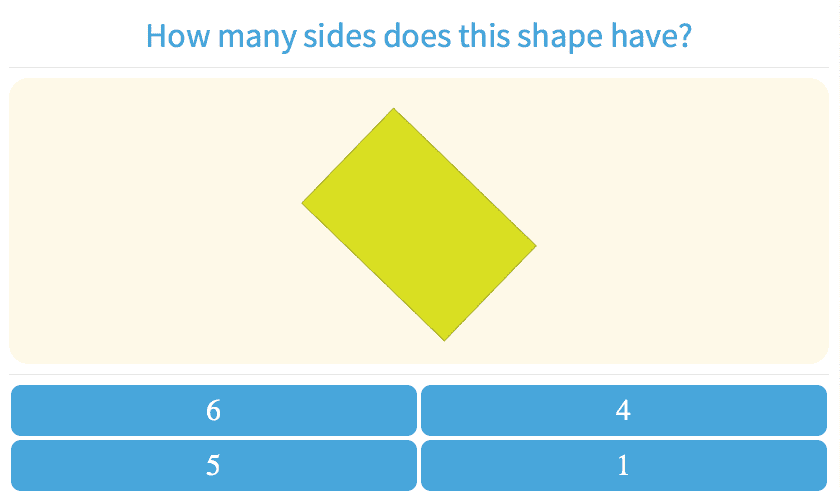
-
KS1.196Symmetry
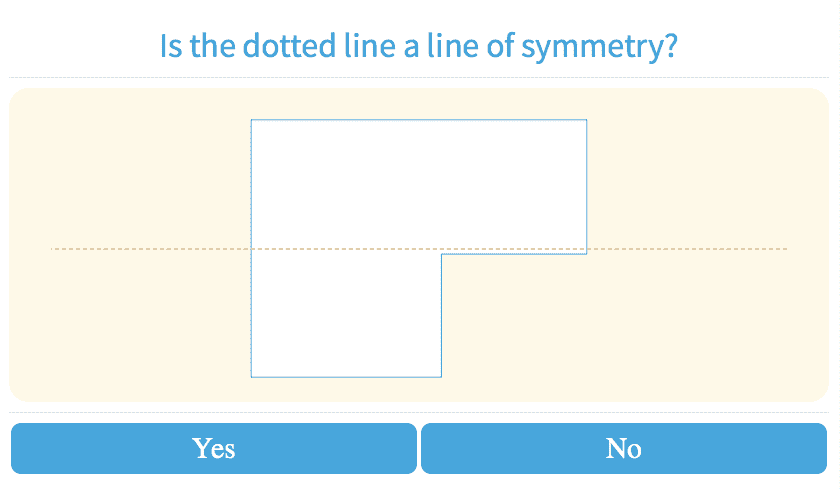
-
KS1.197Identify Solid Figures
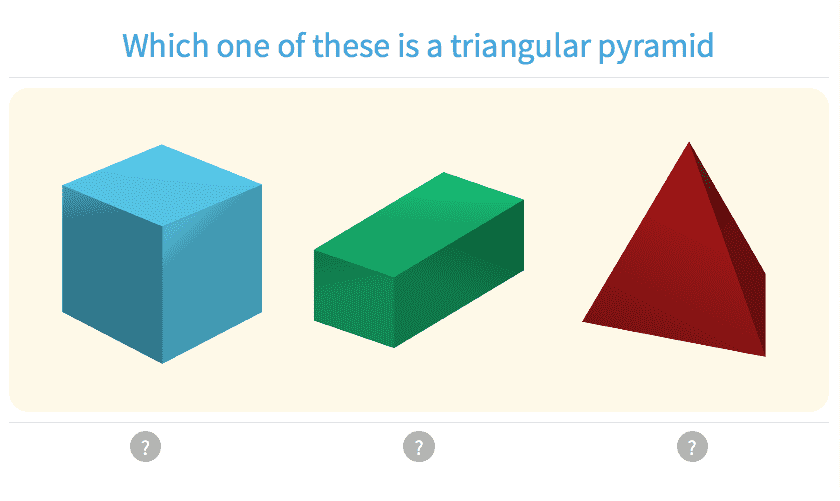
-
KS1.198Geometry of Everyday Objects
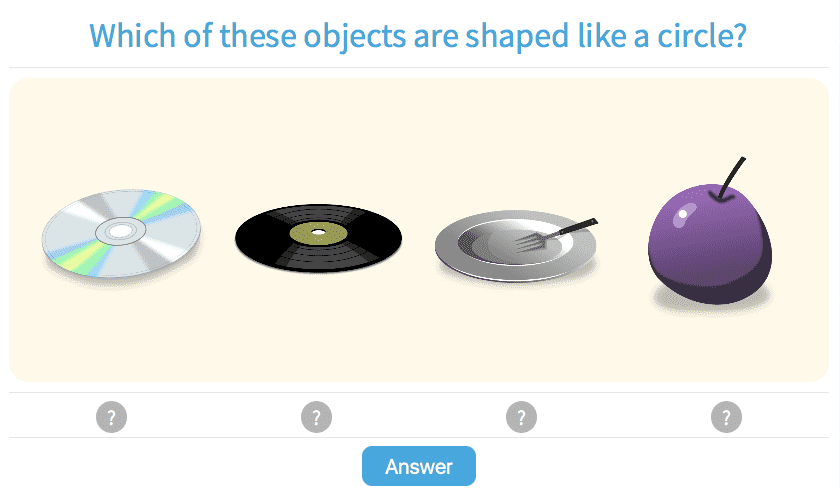
-
KS1.199Which 2 Dimensional Shape Is Described?
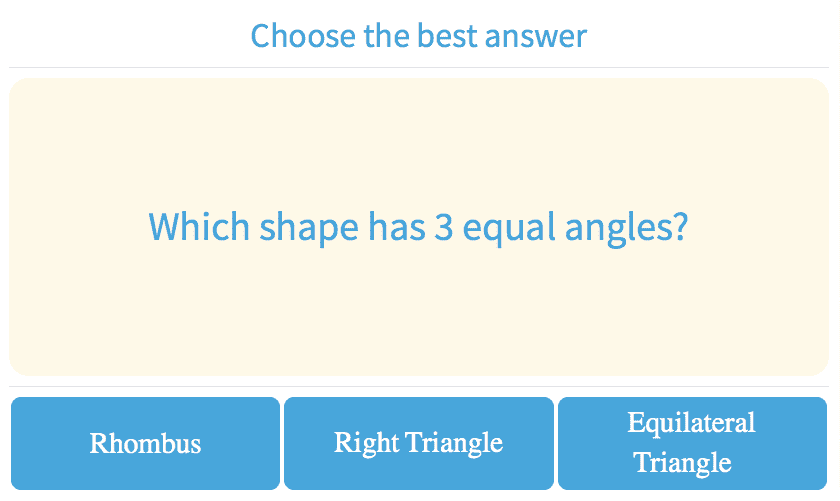
-
KS1.200Identify Planar and Solid Shapes

-
KS1.201Compare Sides and Corners
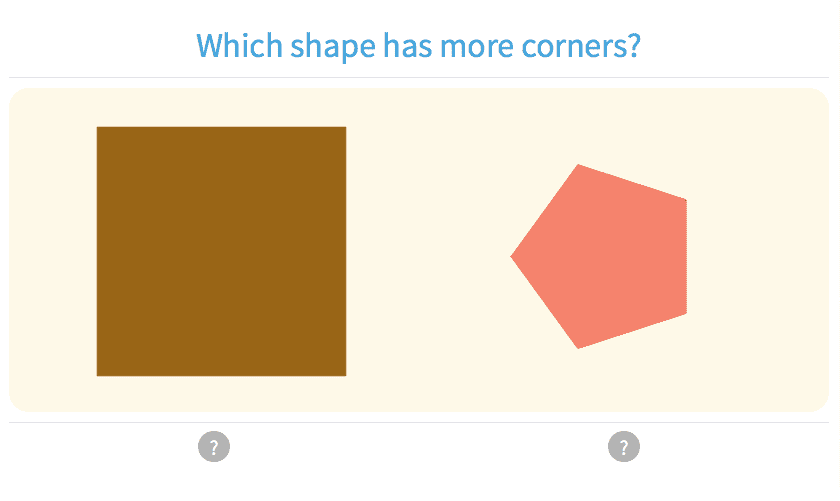
-
KS1.202Which Shape Is Described?

-
KS1.203Lines, Line Segments and Rays
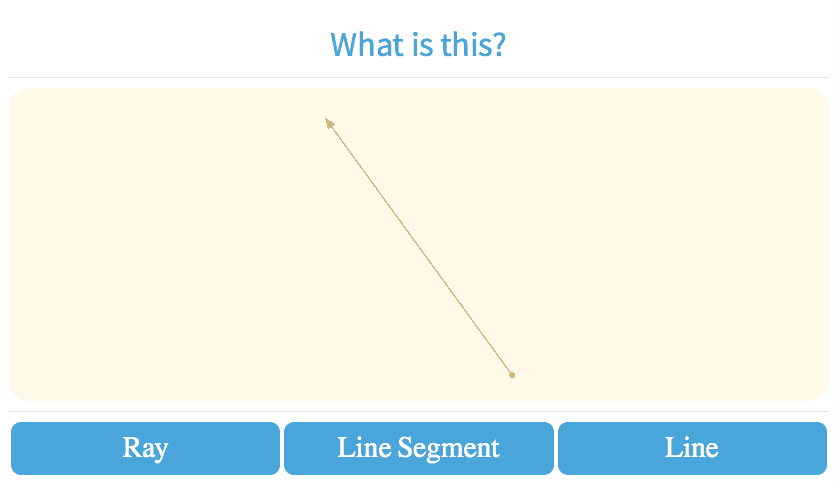
-
KS1.204Acute, Right, Obtuse, and Straight Angles
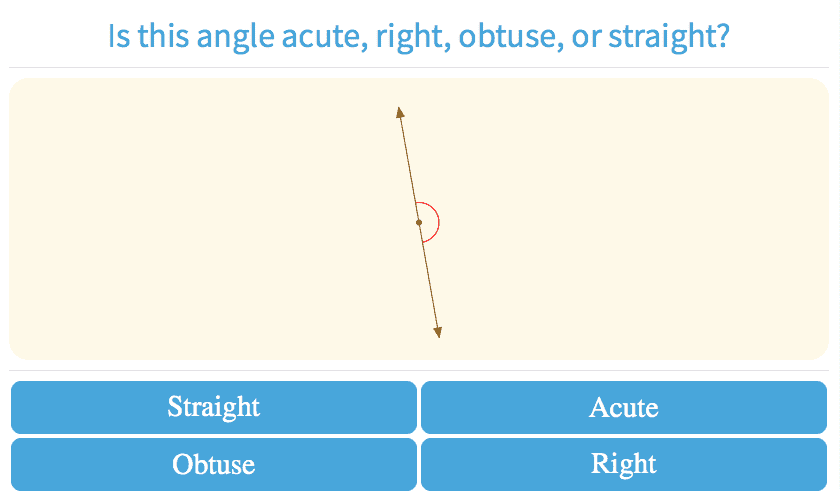
-
KS1.205Angles of 90, 180, 270 and 360 Degrees
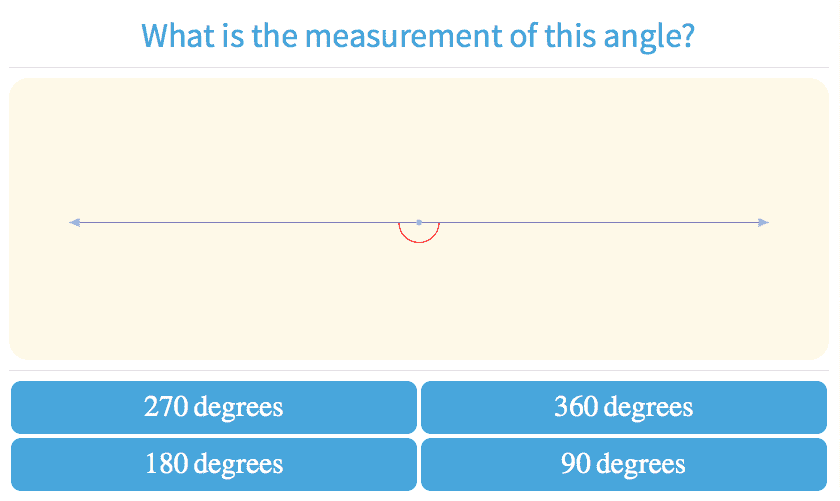
-
KS1.206Types of Triangles
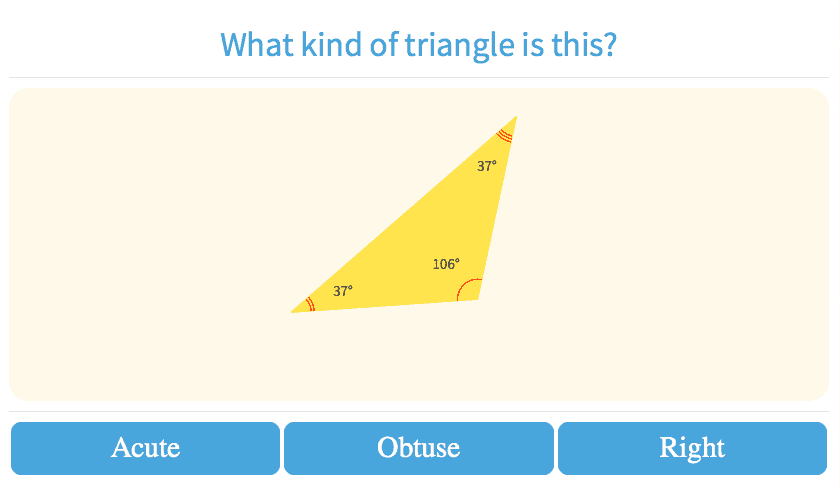
-
-
Graphing
-
KS1.209Create Line Plots
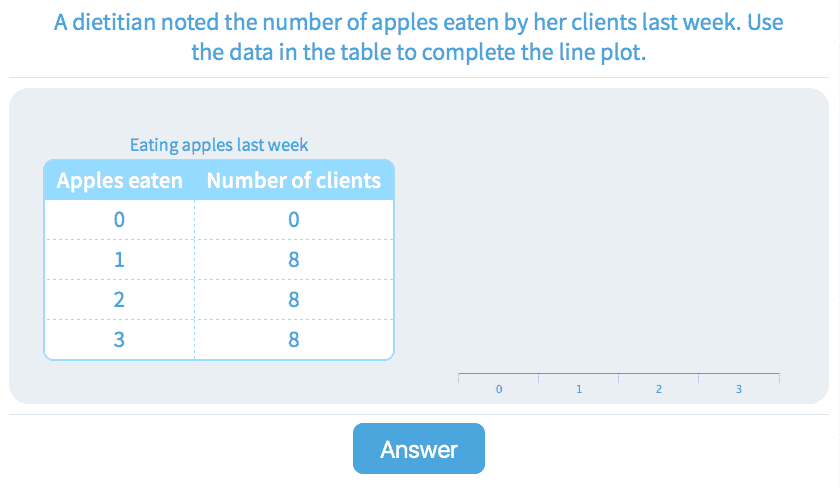
-
KS1.213Venn Diagrams

-
KS1.220Interpret Line Plots with Up to 5 Data Points
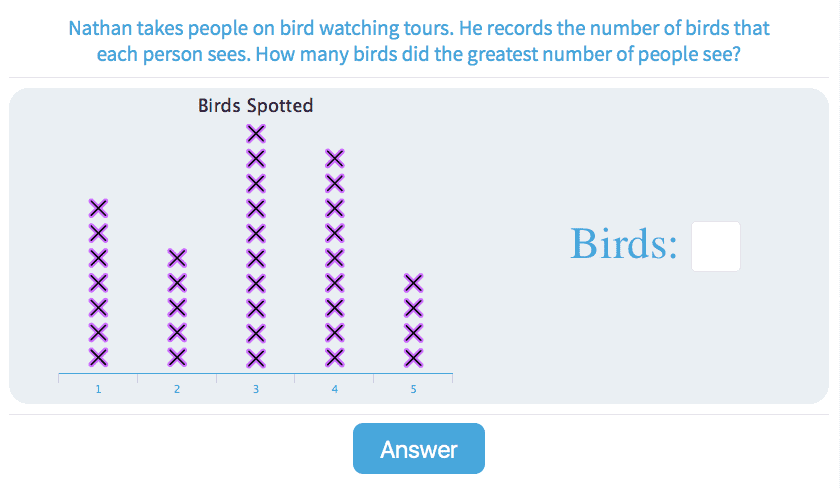
-
KS1.221Interpret Line Plots
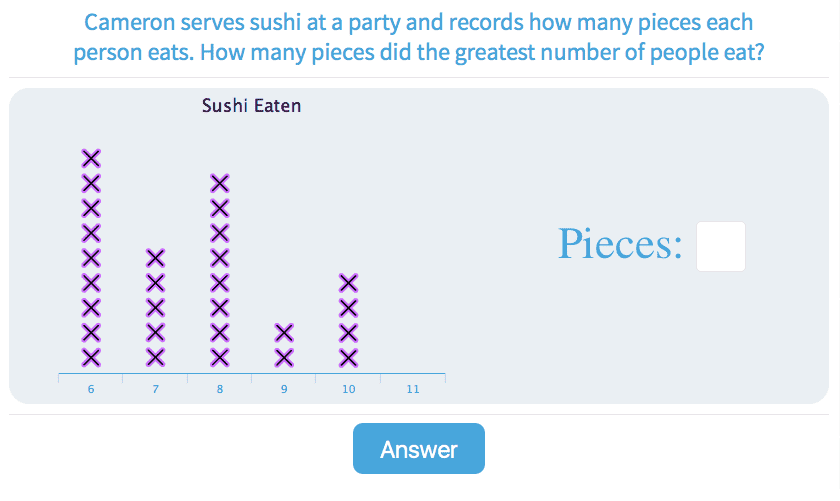
-
KS1.222Interpret Line Plots with Numbers Up to 40

-
KS1.225Interpret Line Graphs
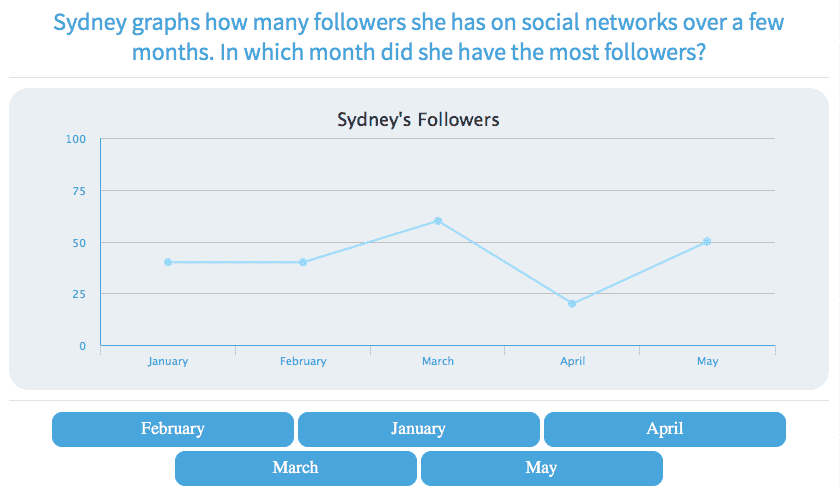
-
Students entering the 7th grade continue to expand on concepts from their previous years. On-demand videos with teachers who explain the concepts and show students how to understand the problem-solving process. Teachers go over rules, tips, and multiple problems helping students to be able to solve the problems themselves.
- Students learn about ratios, mixed properties, statistics and other seventh grade skills.
- Teachers incorporate the use of the scratchpad to give students a visual representation.
- Videos provide instant help for students who are struggling with their assignments.
